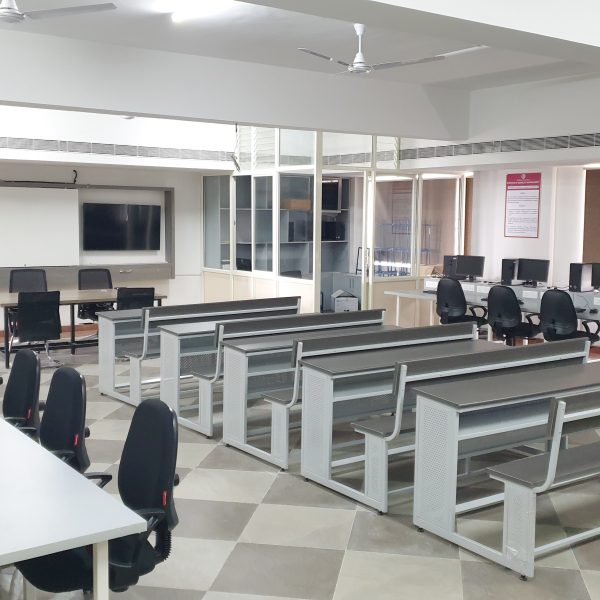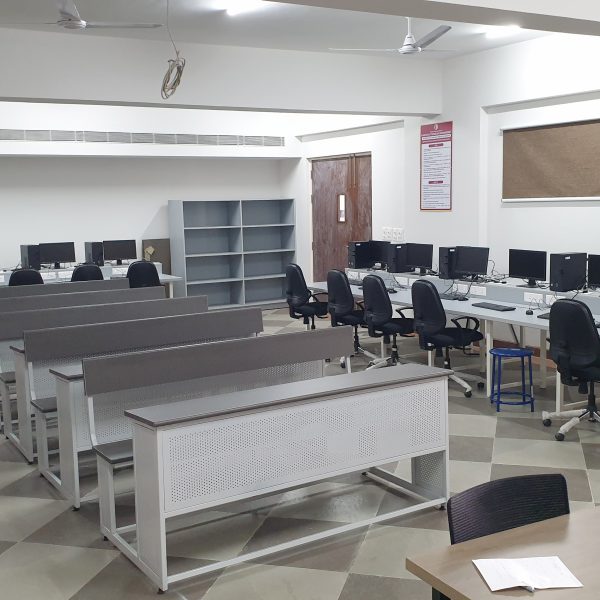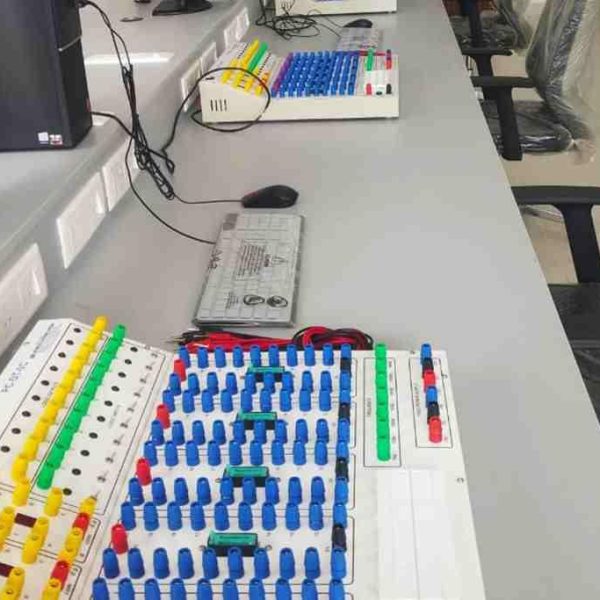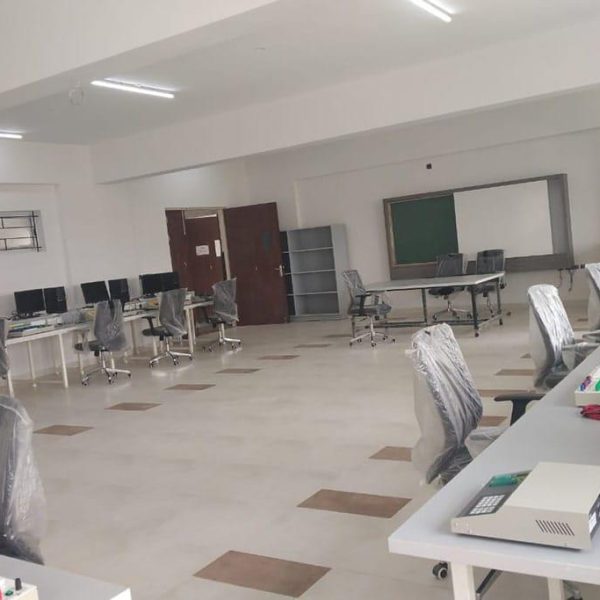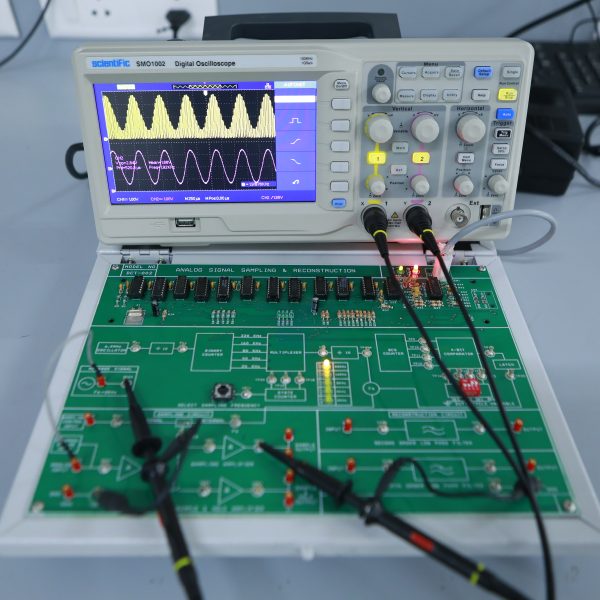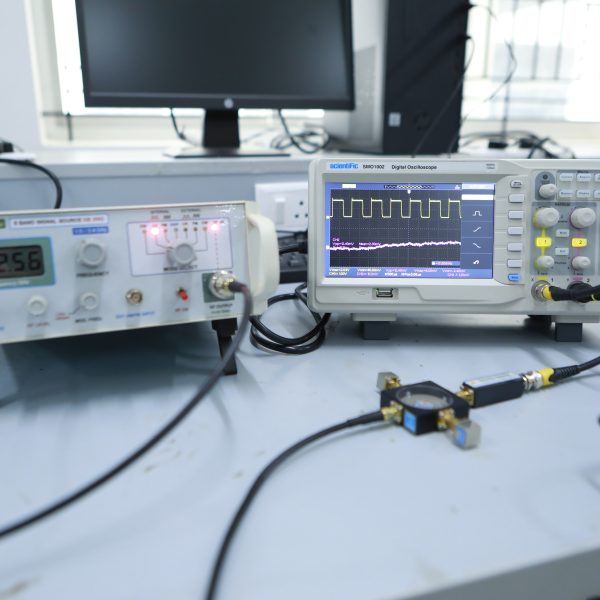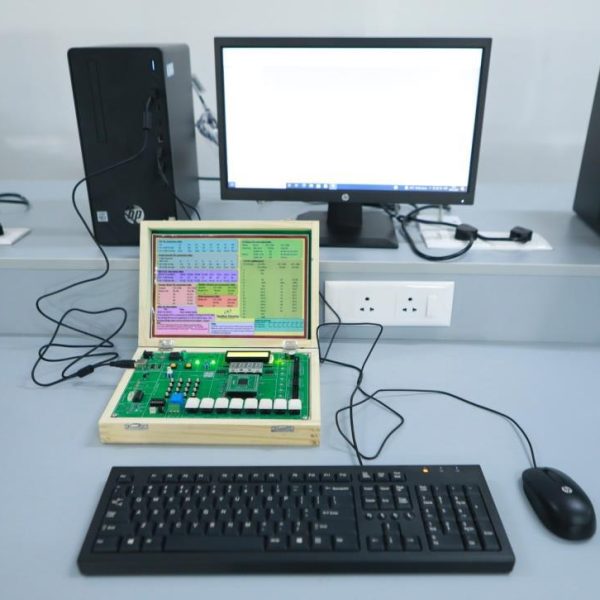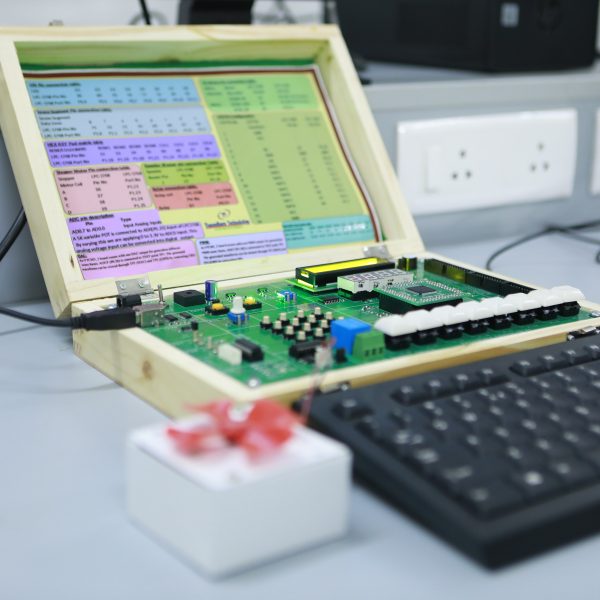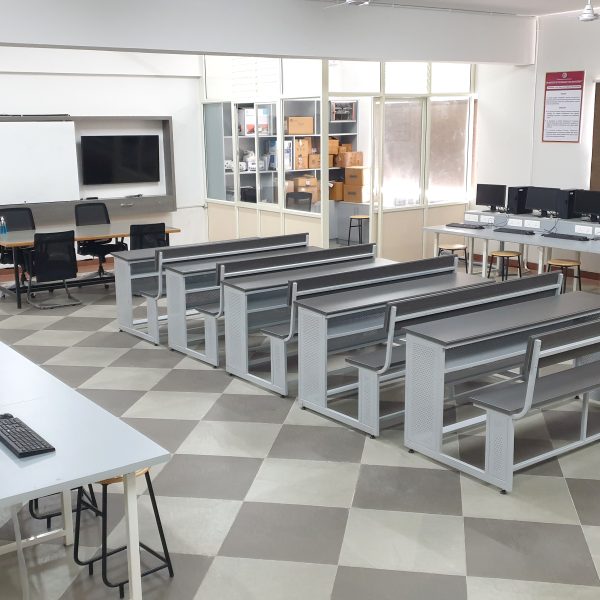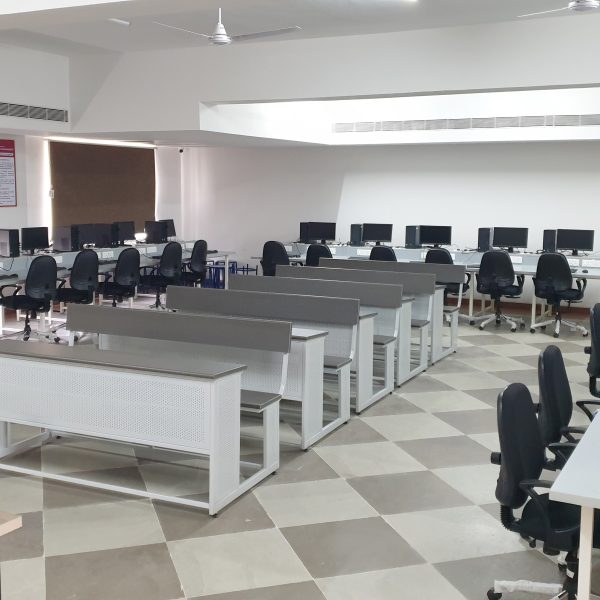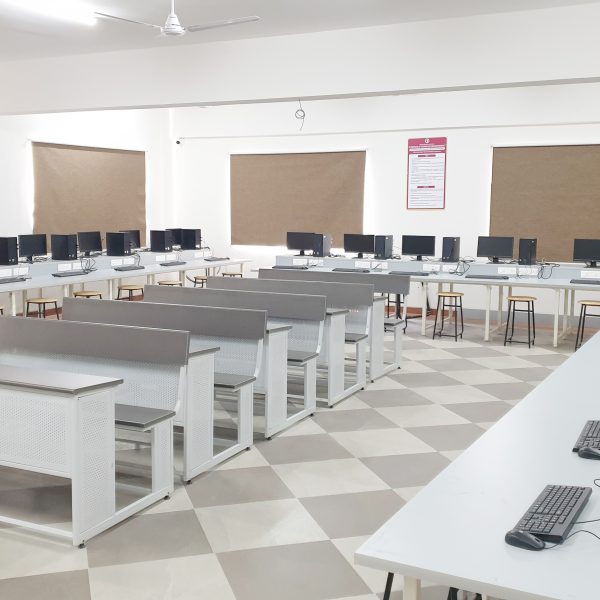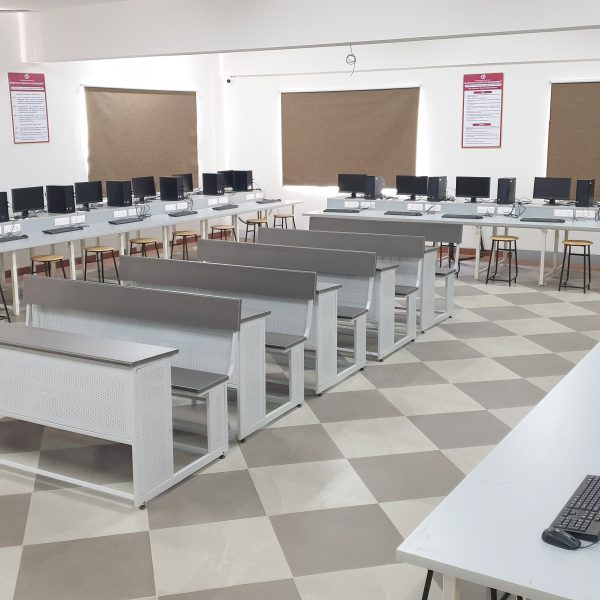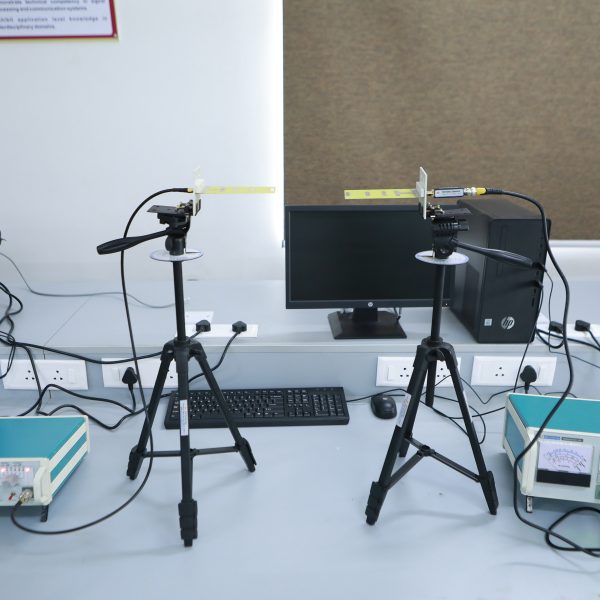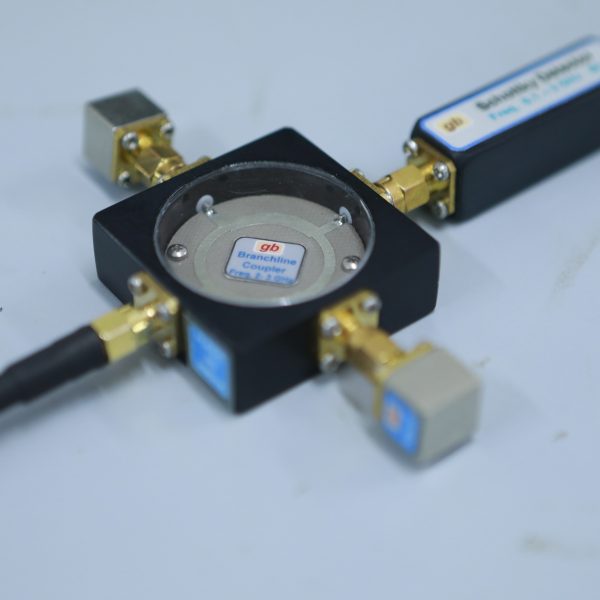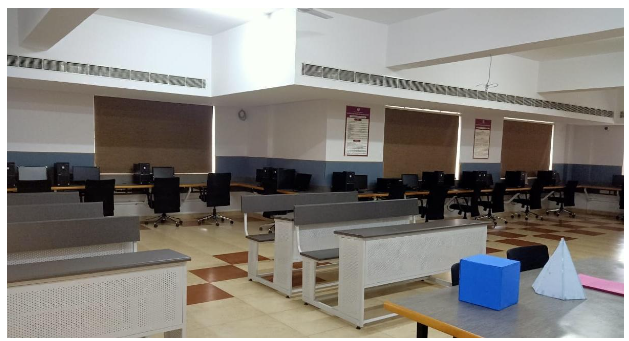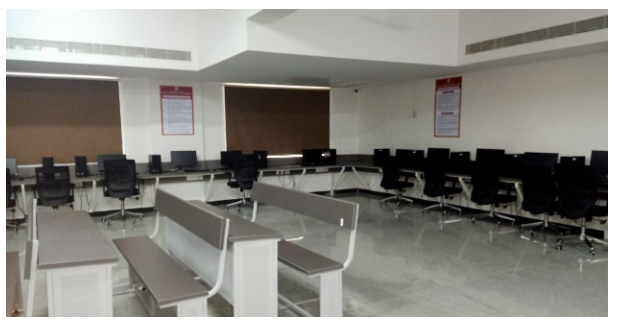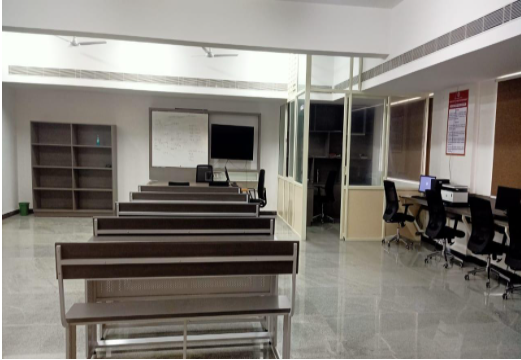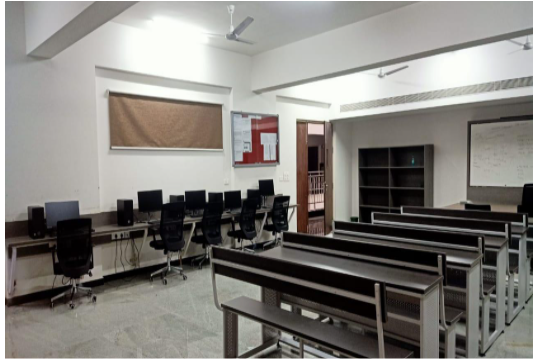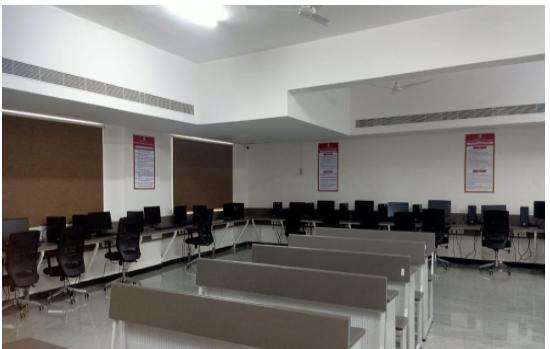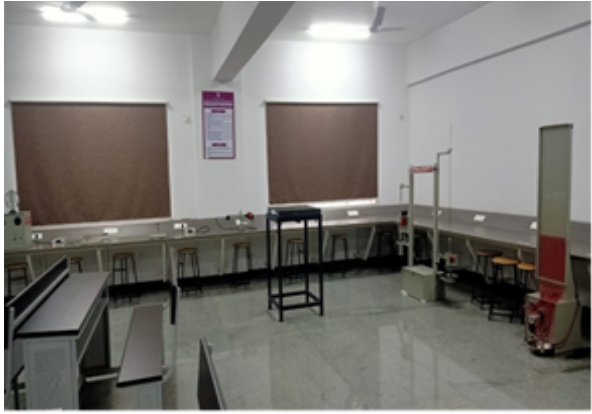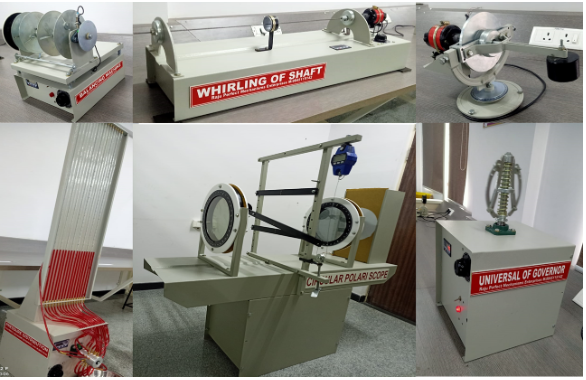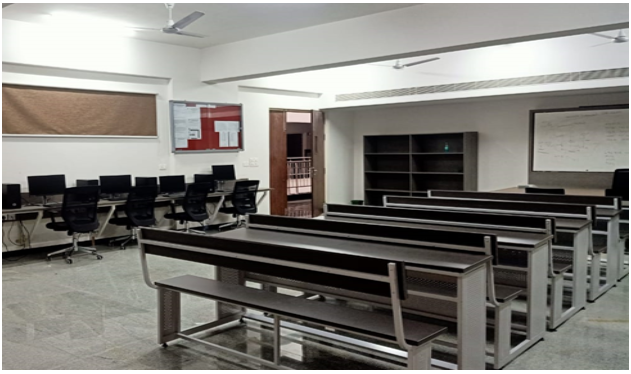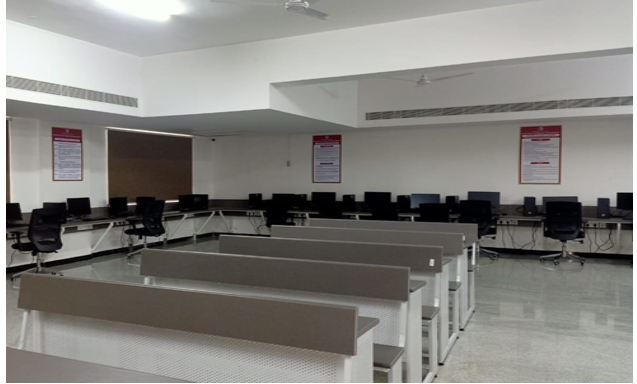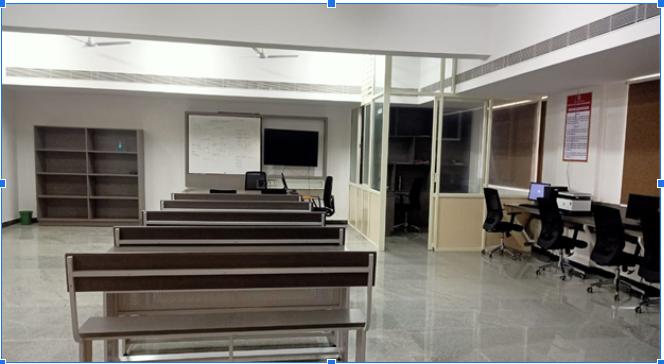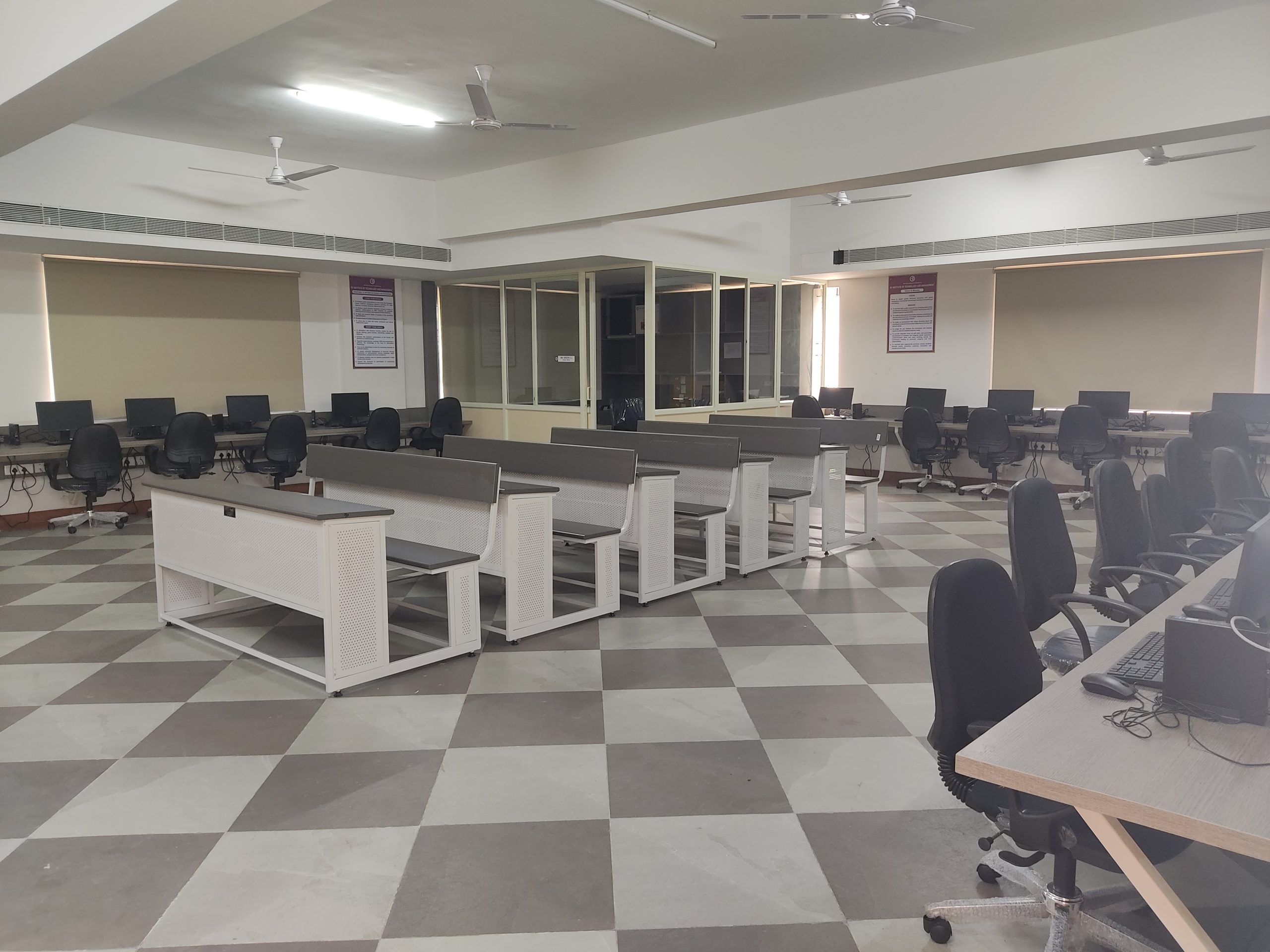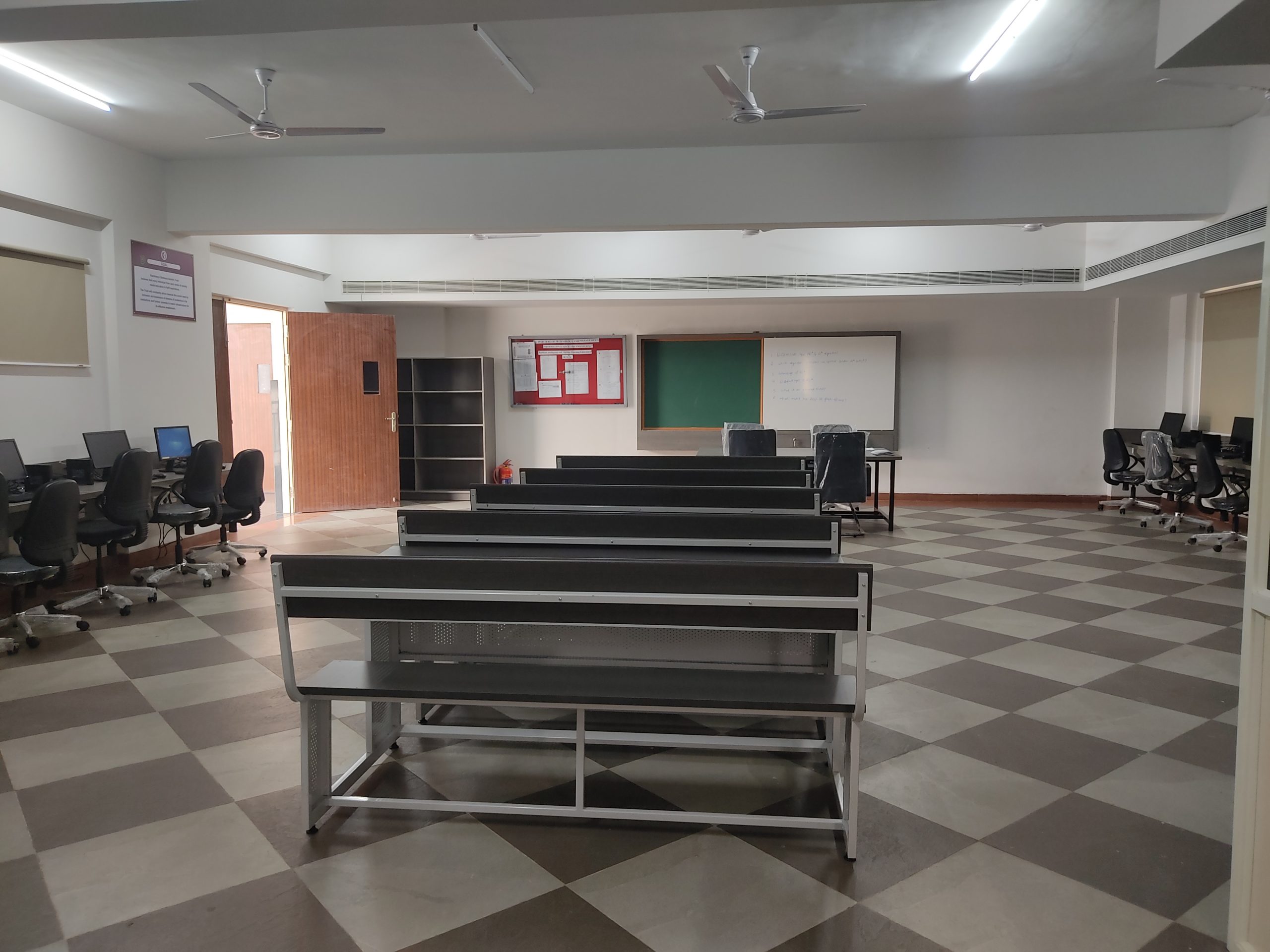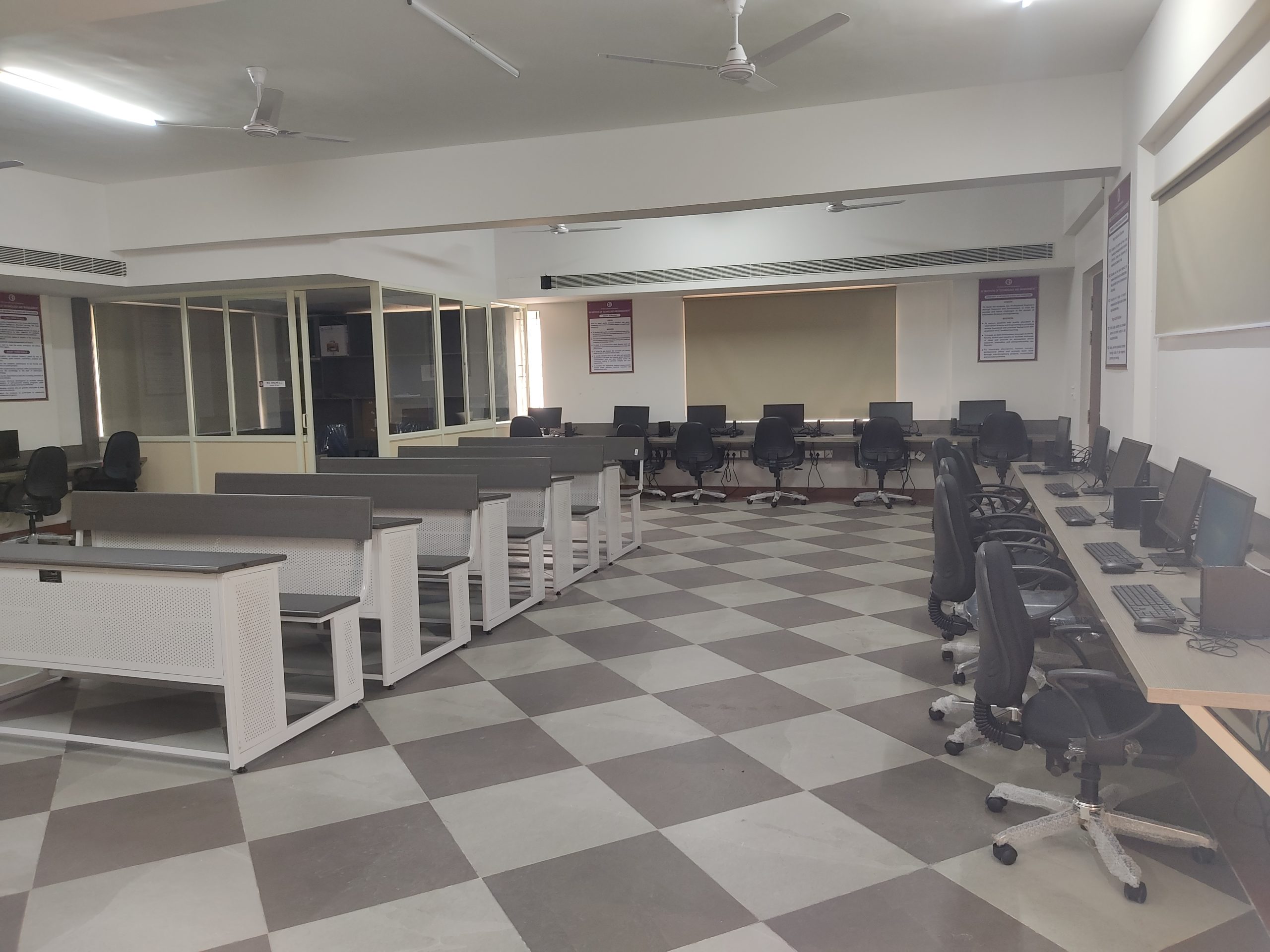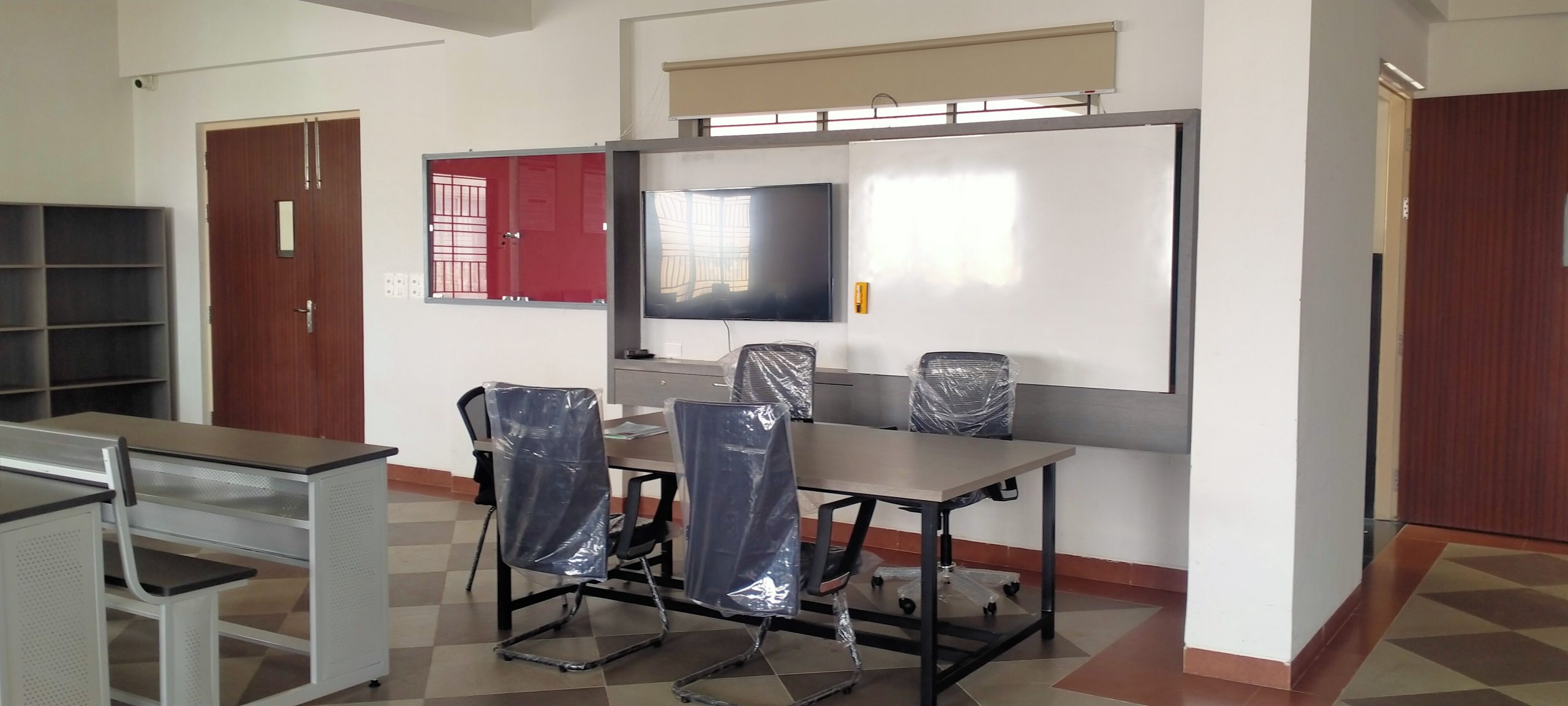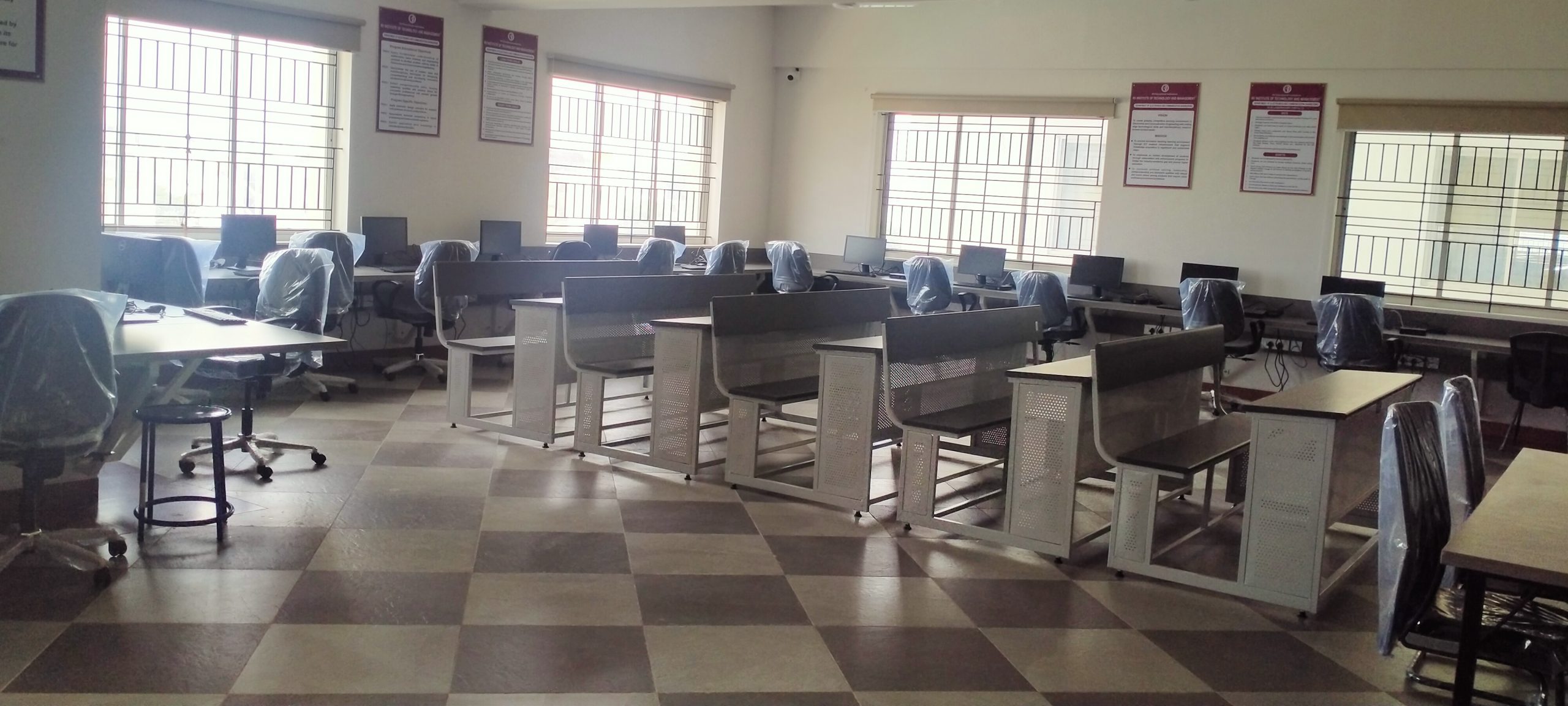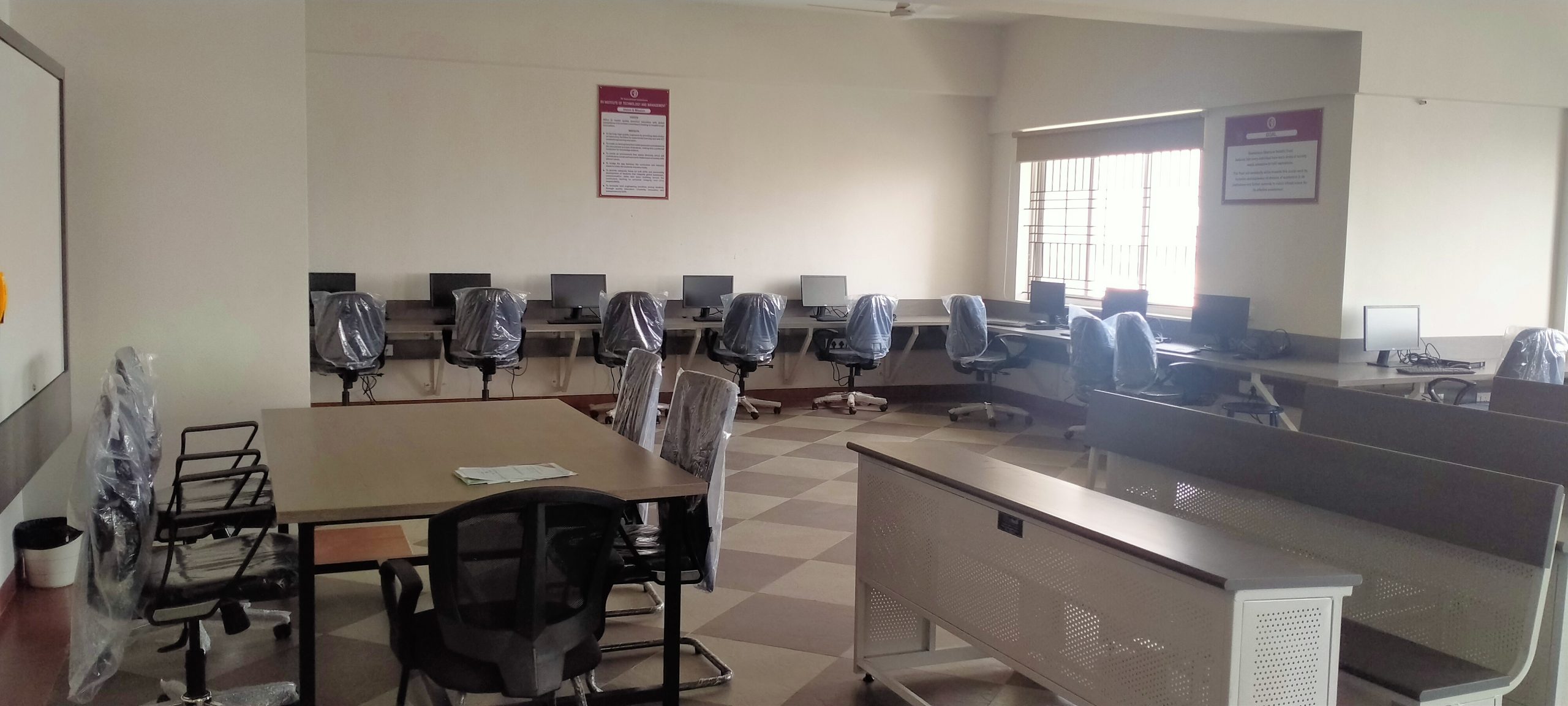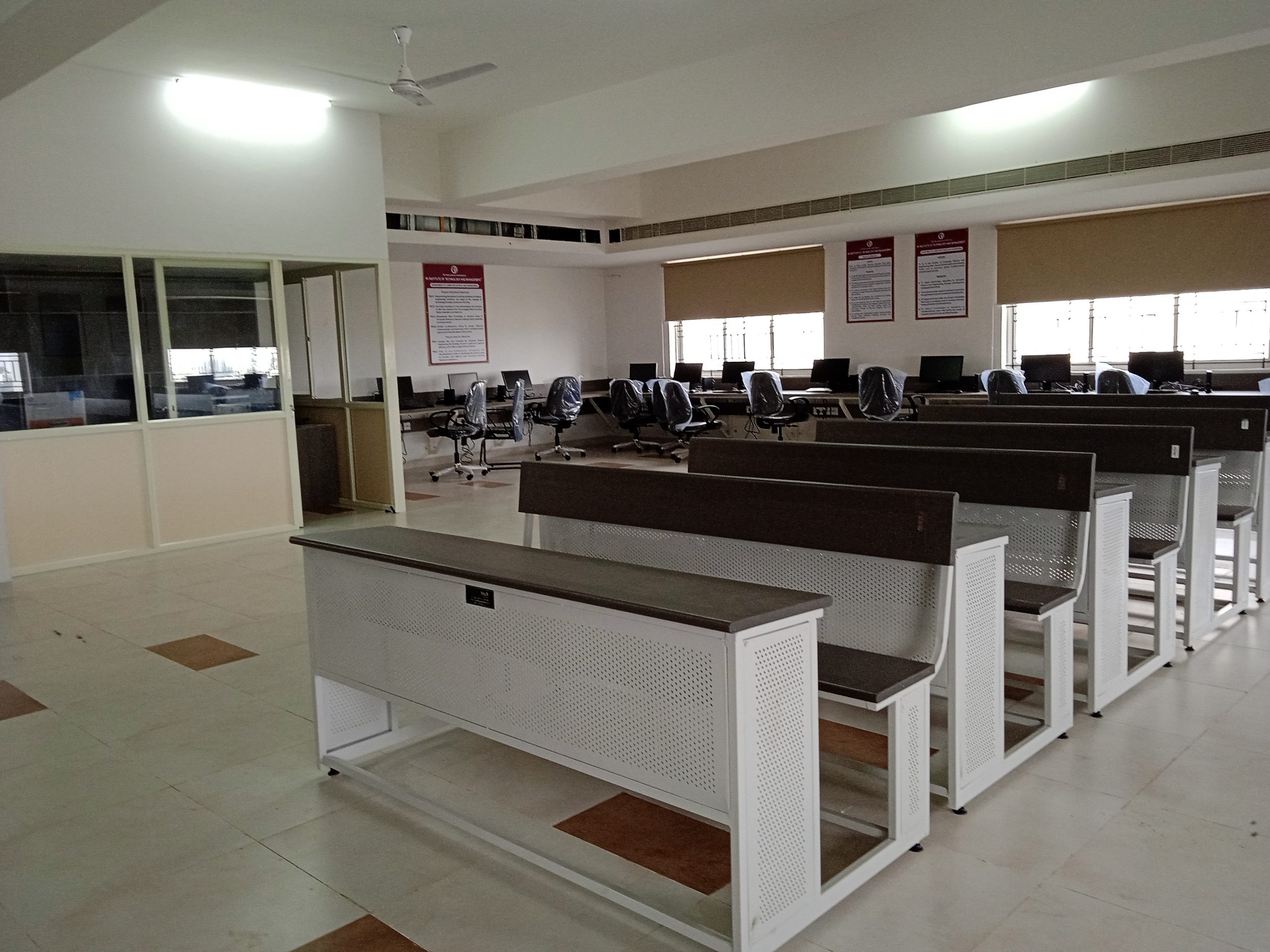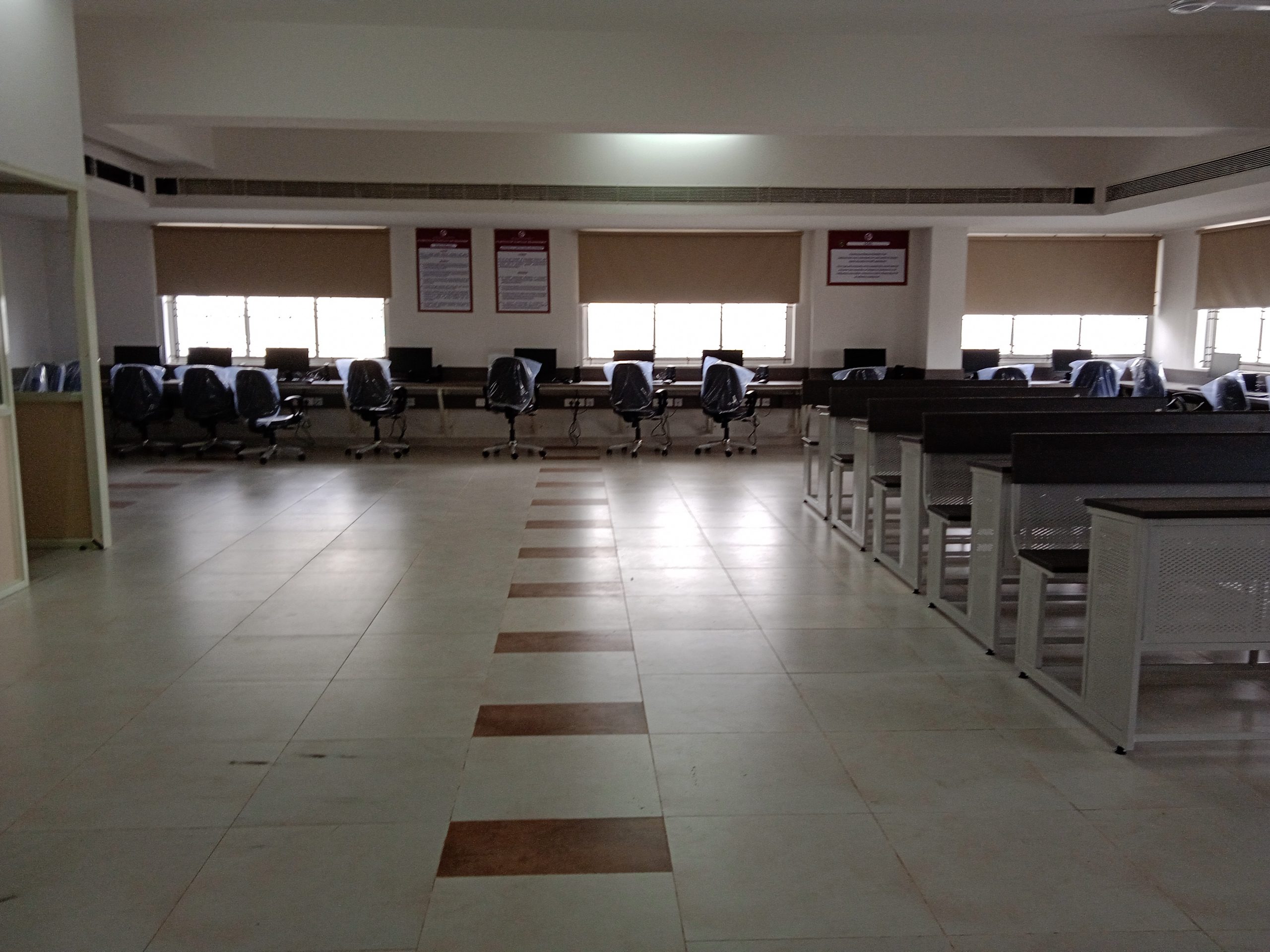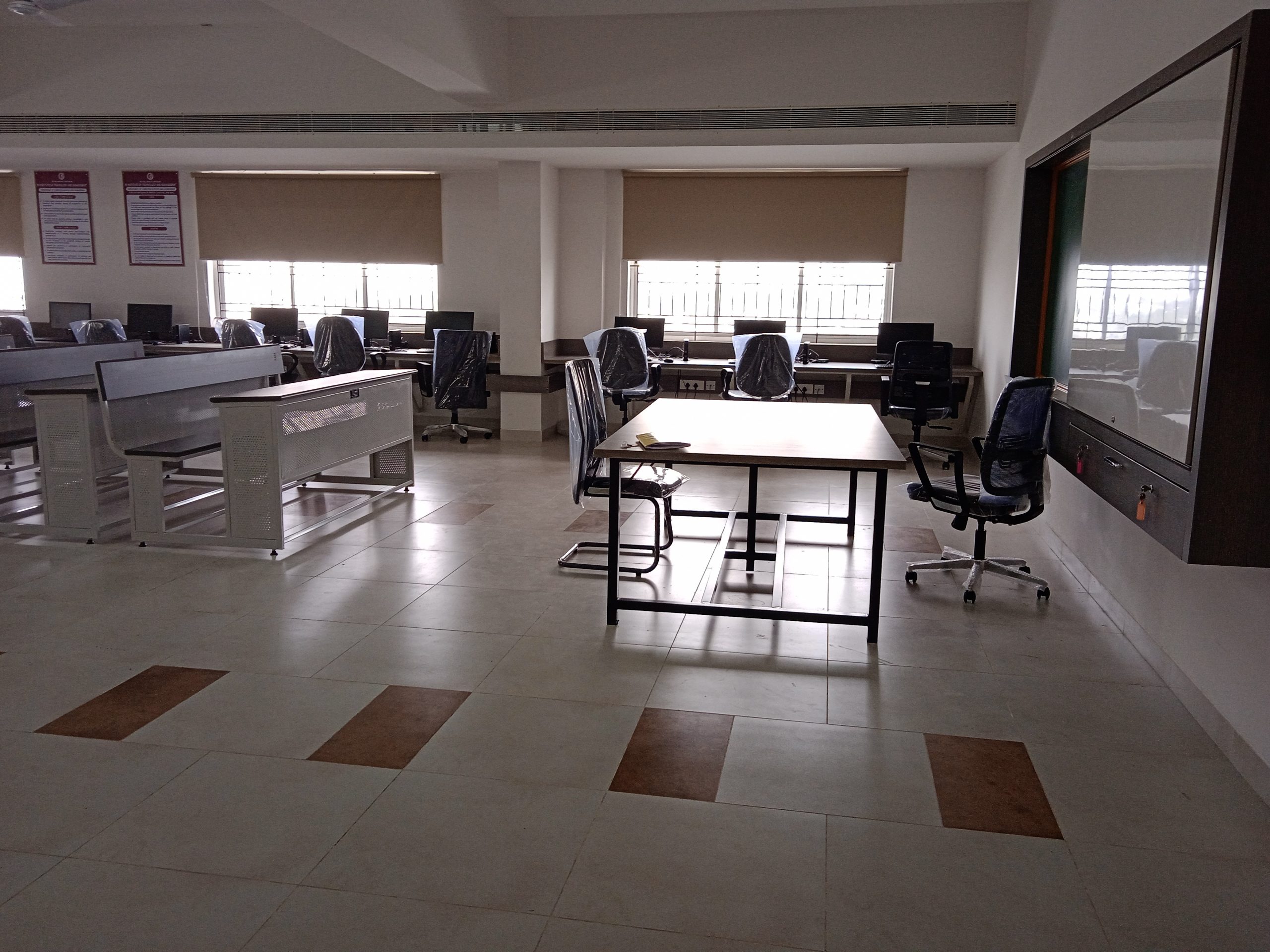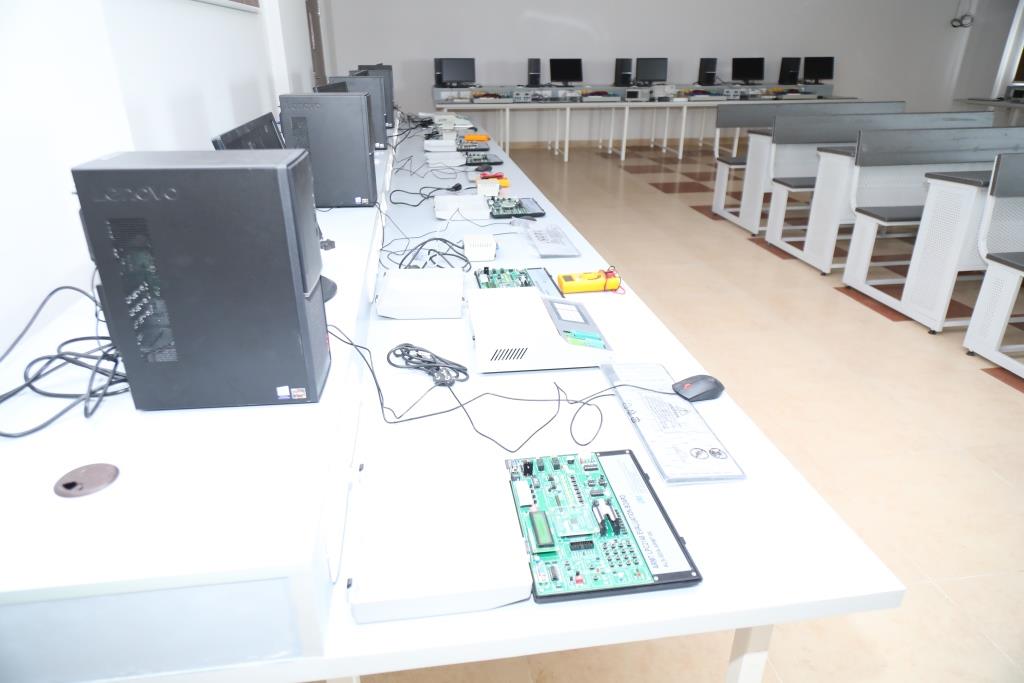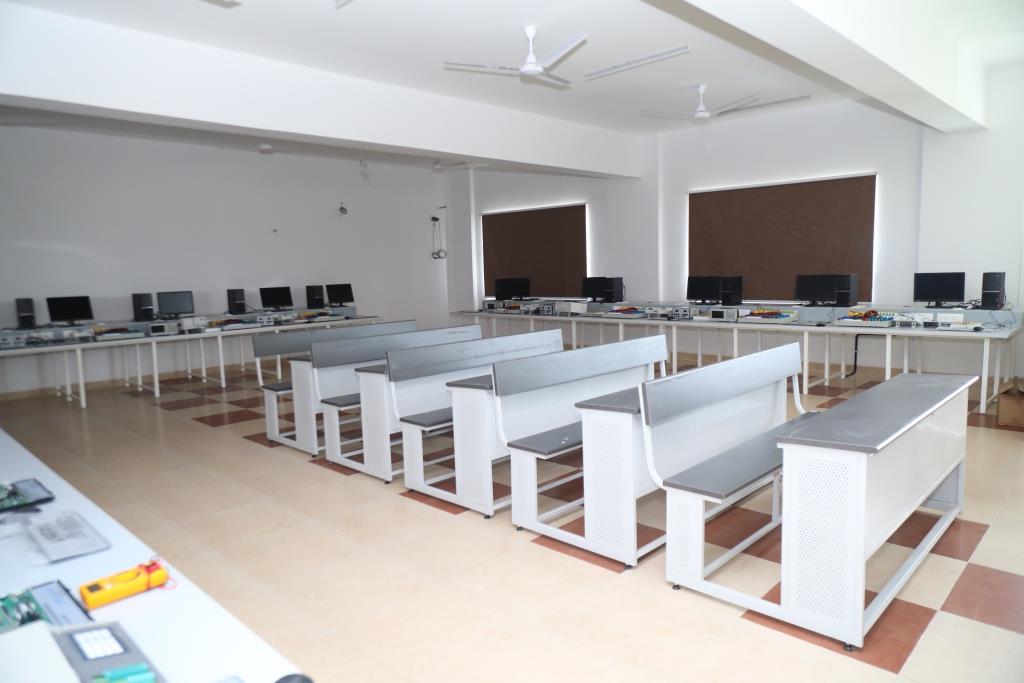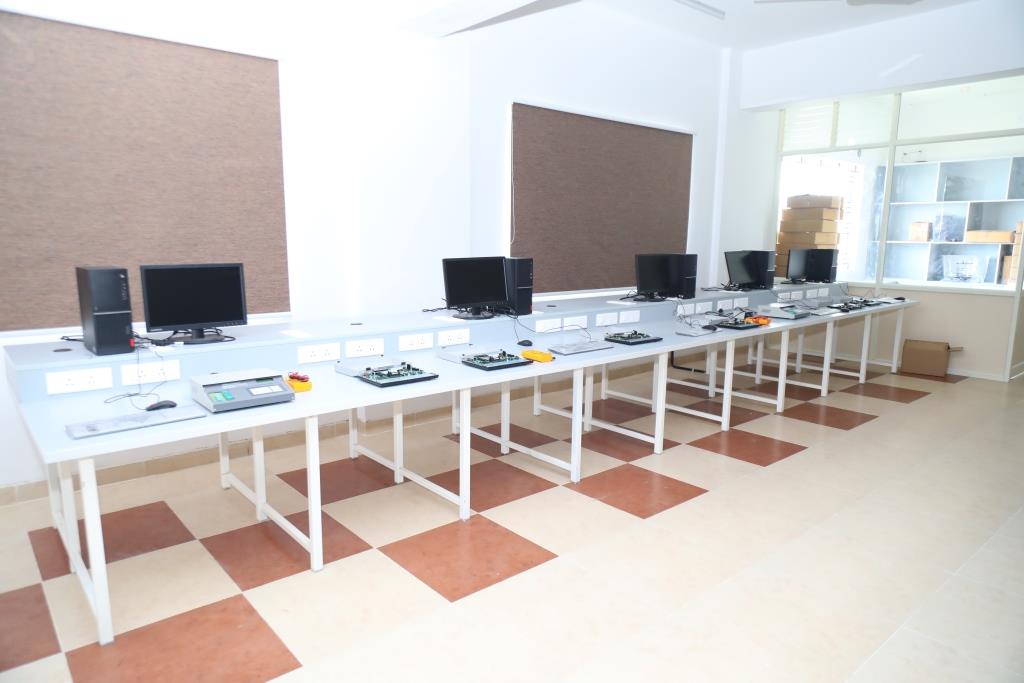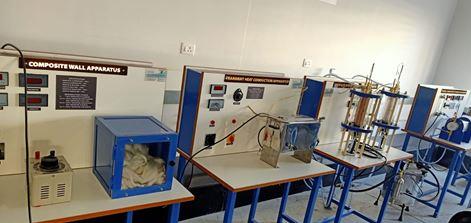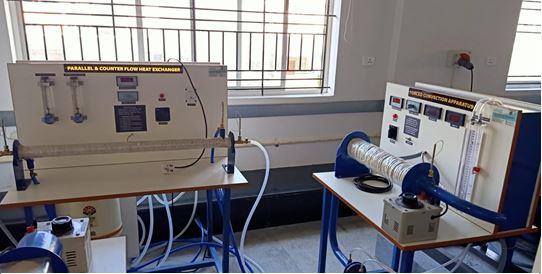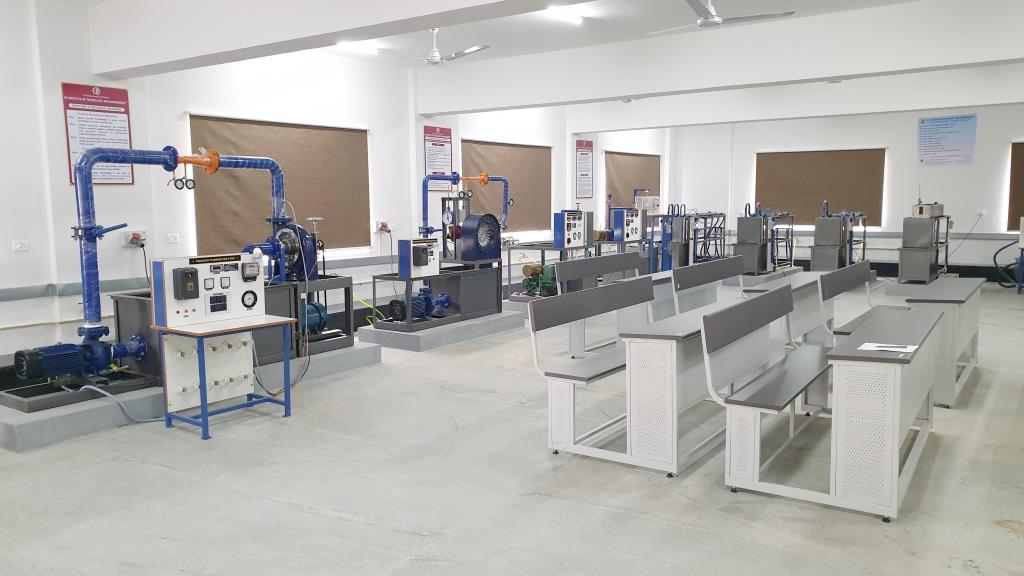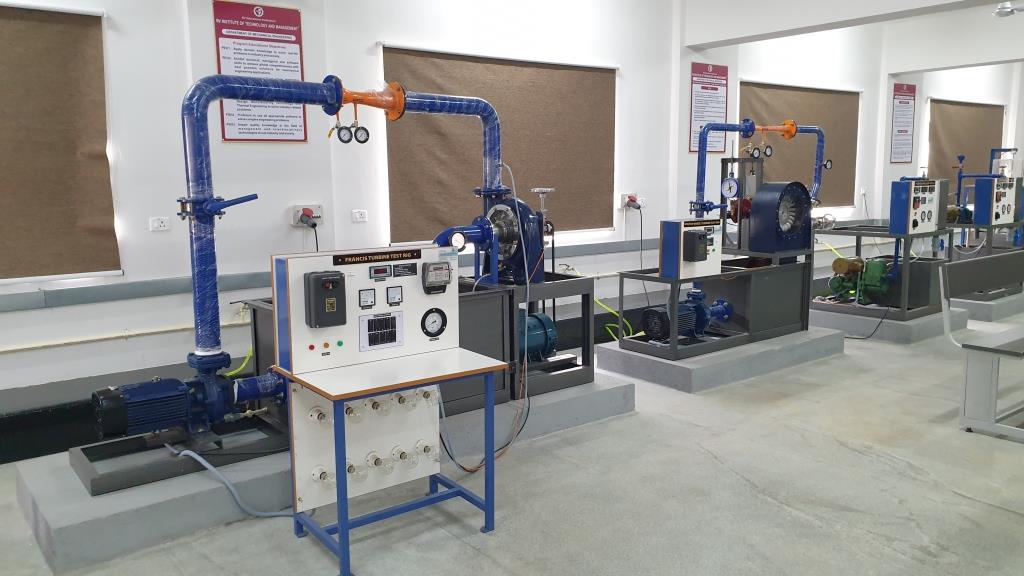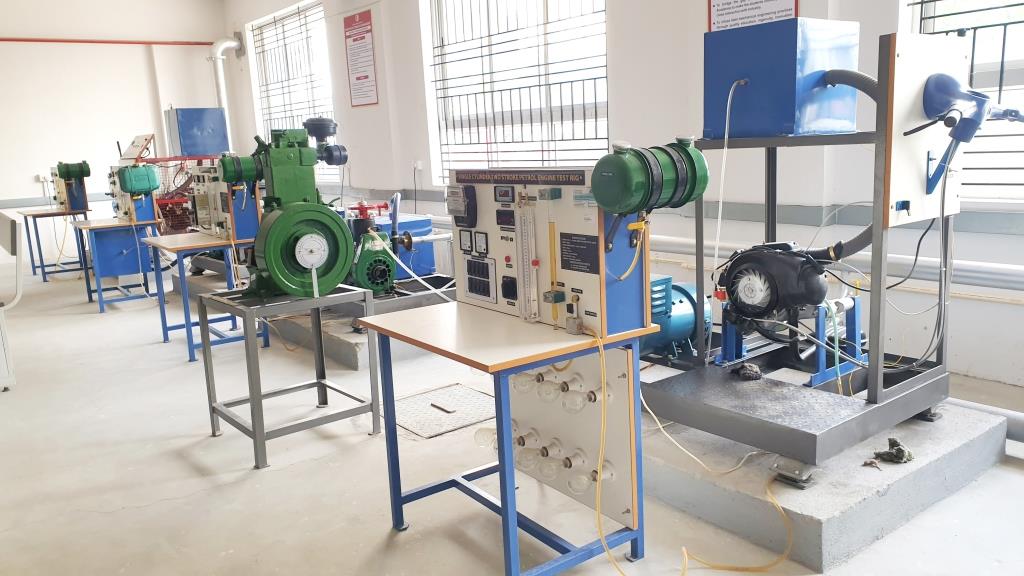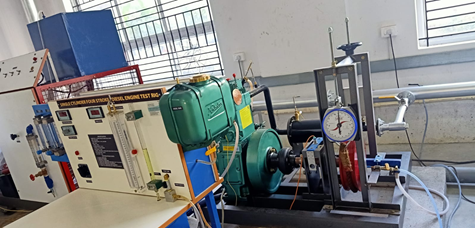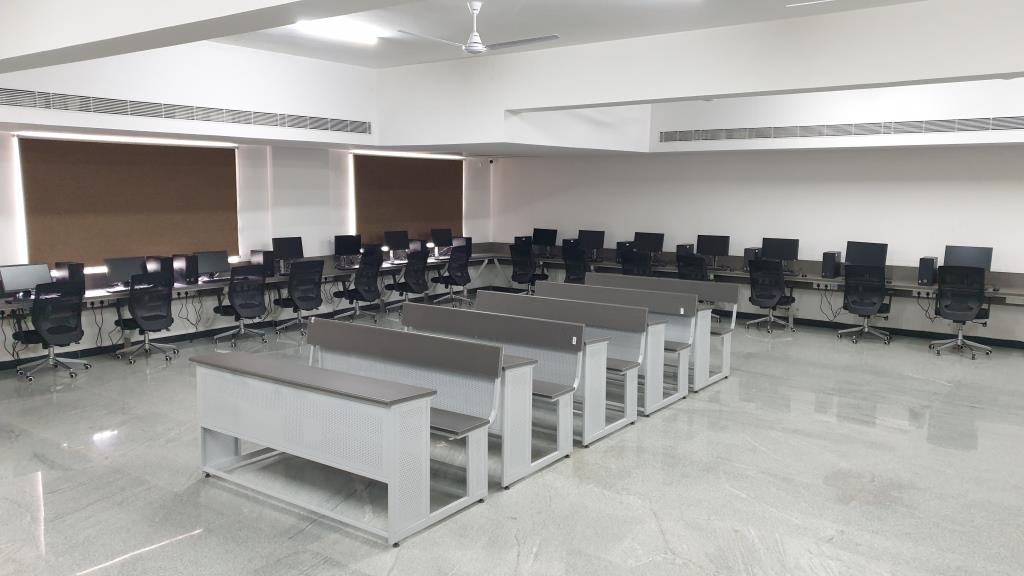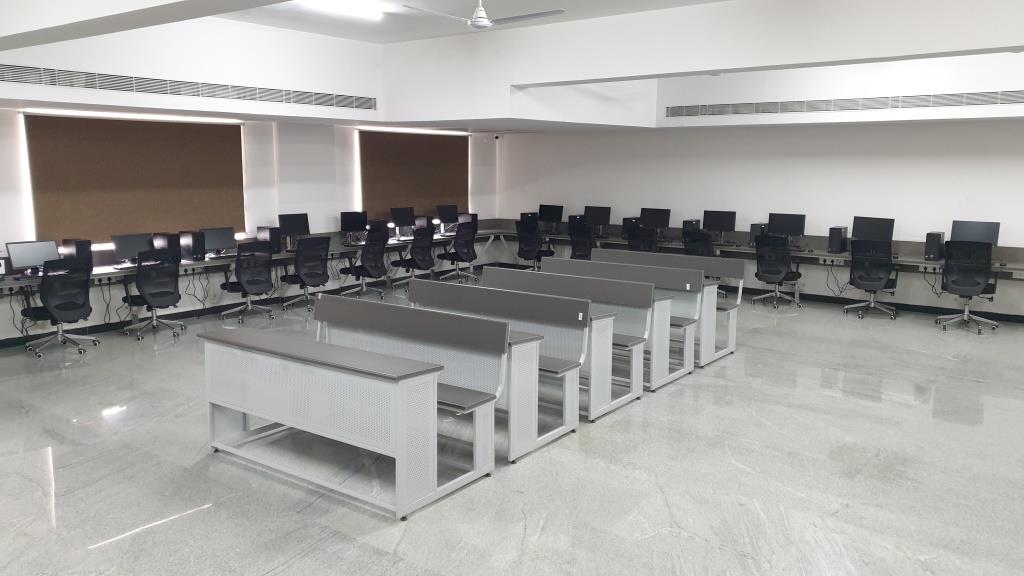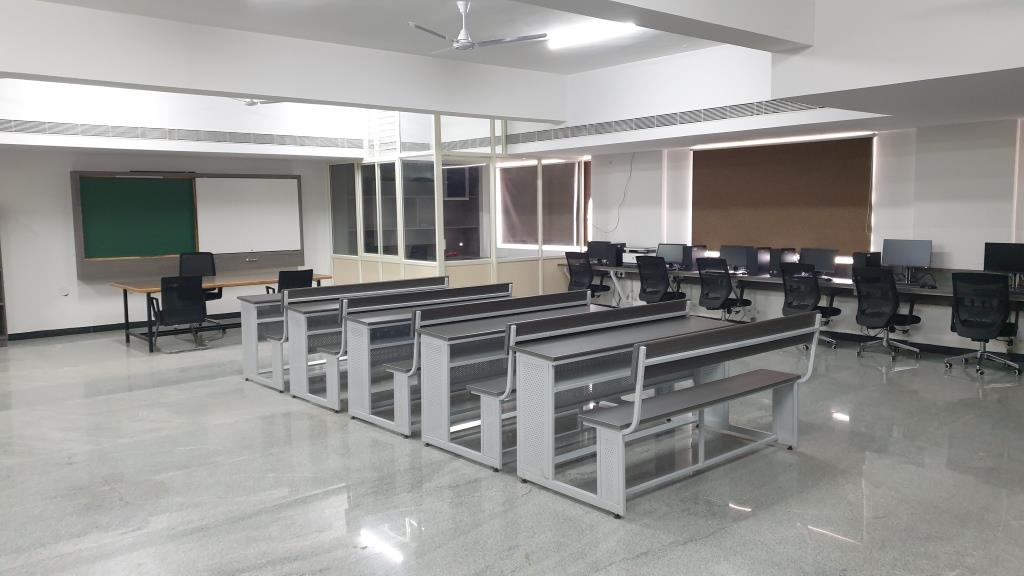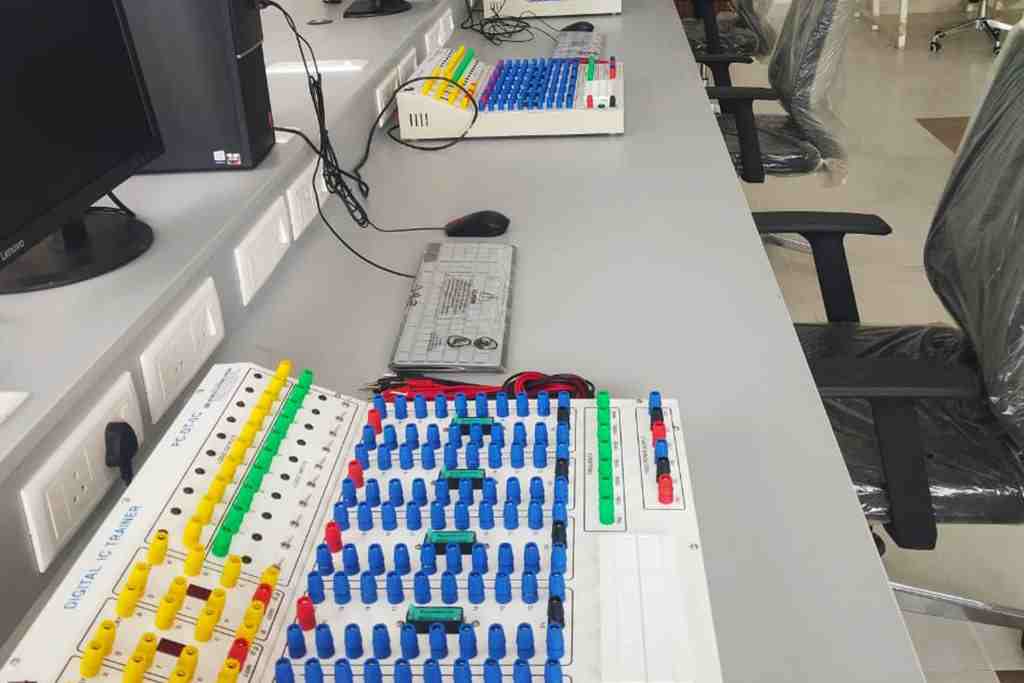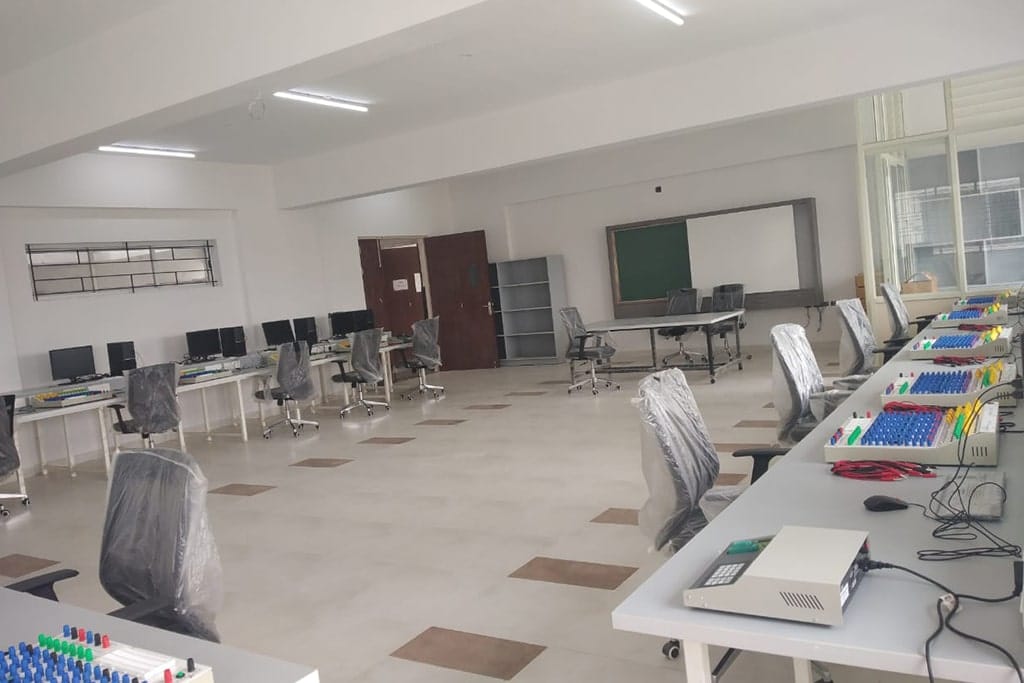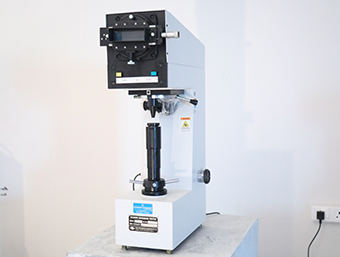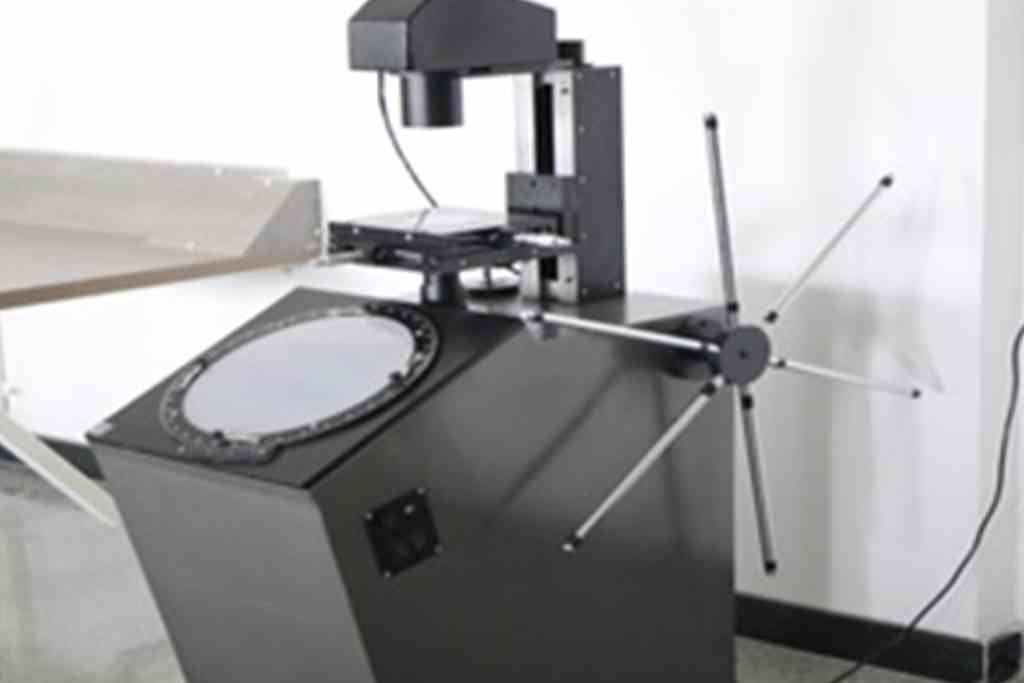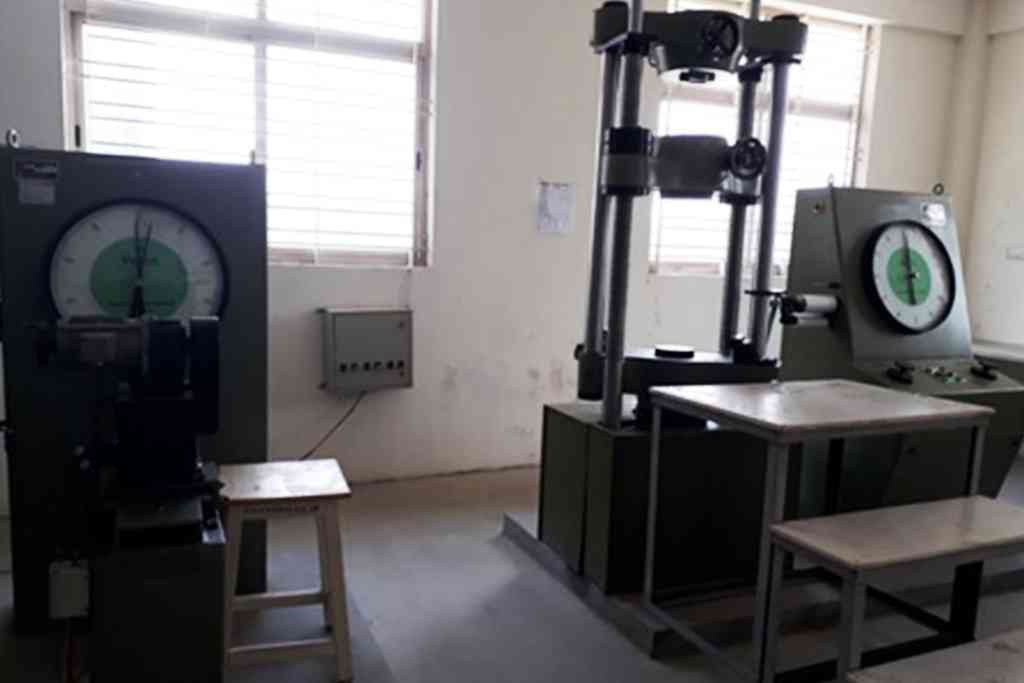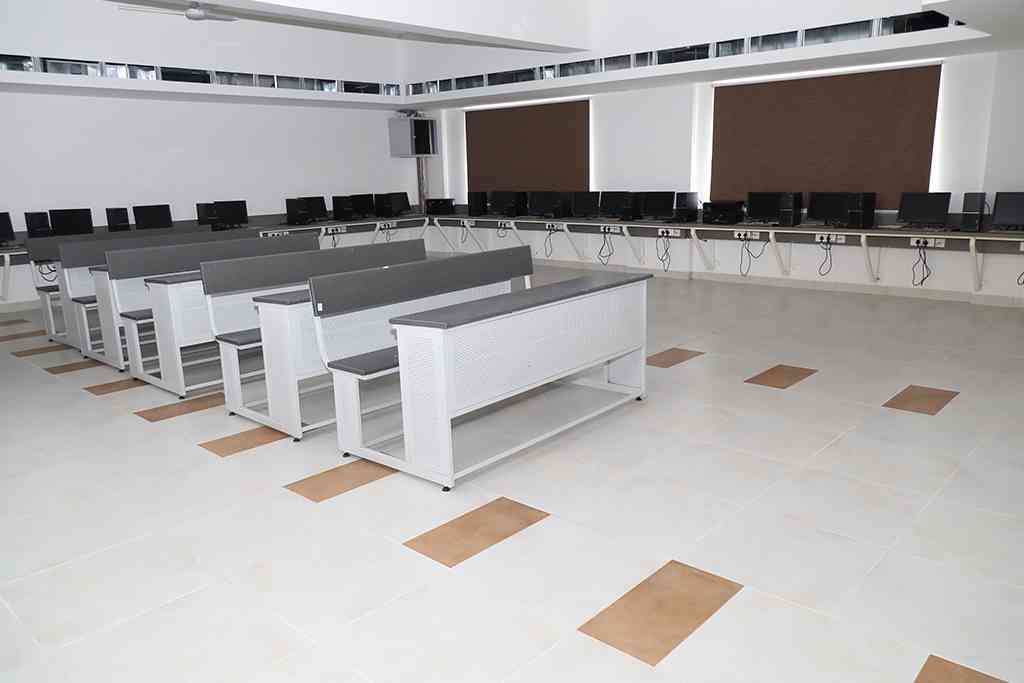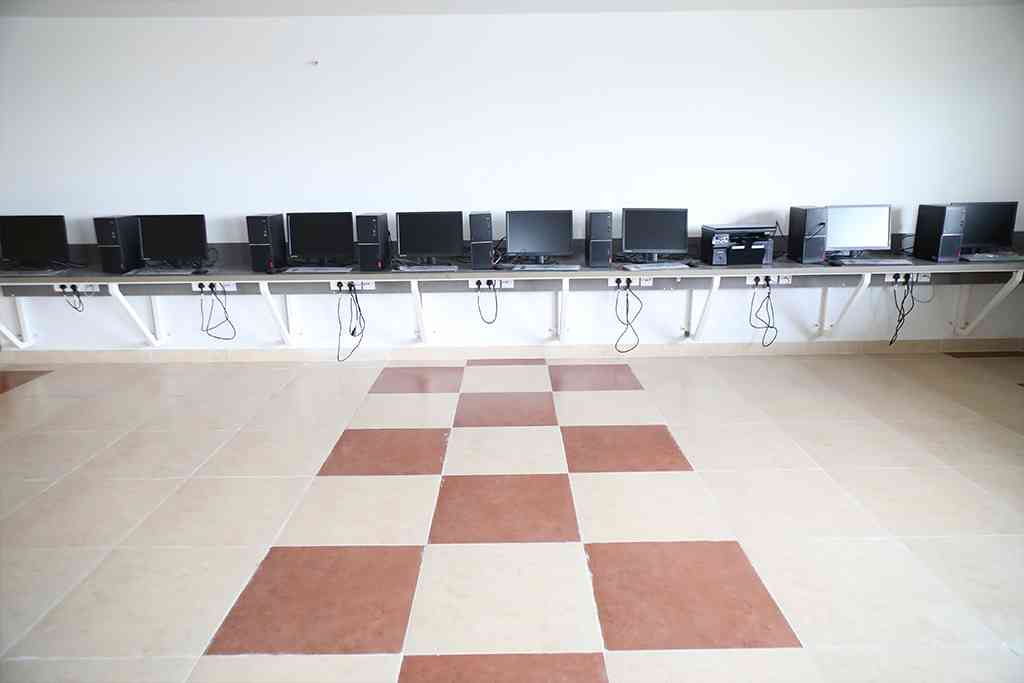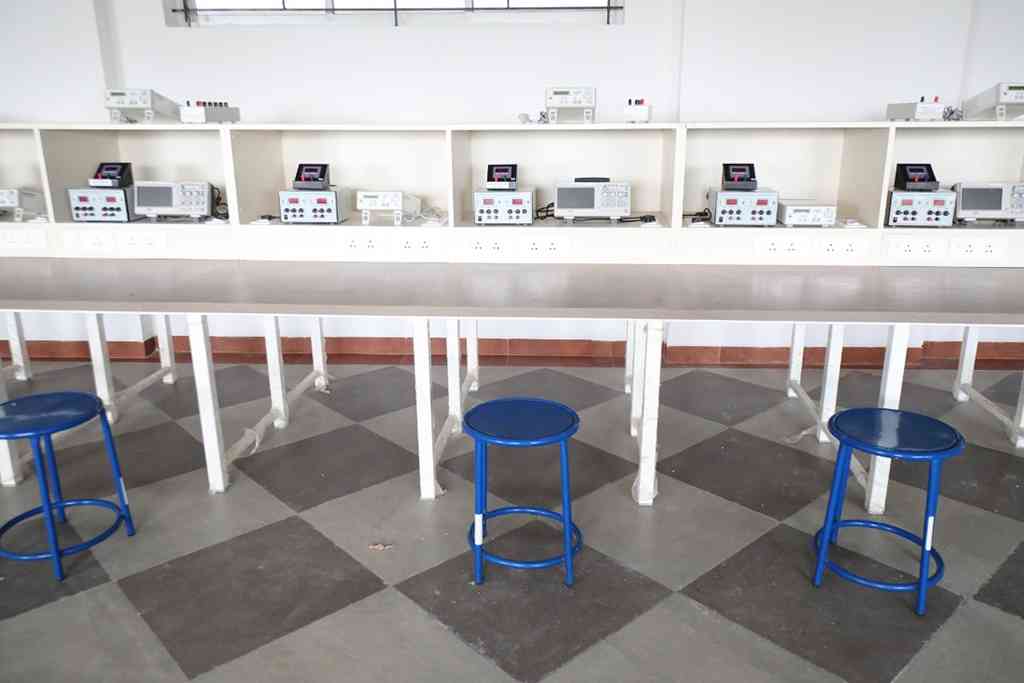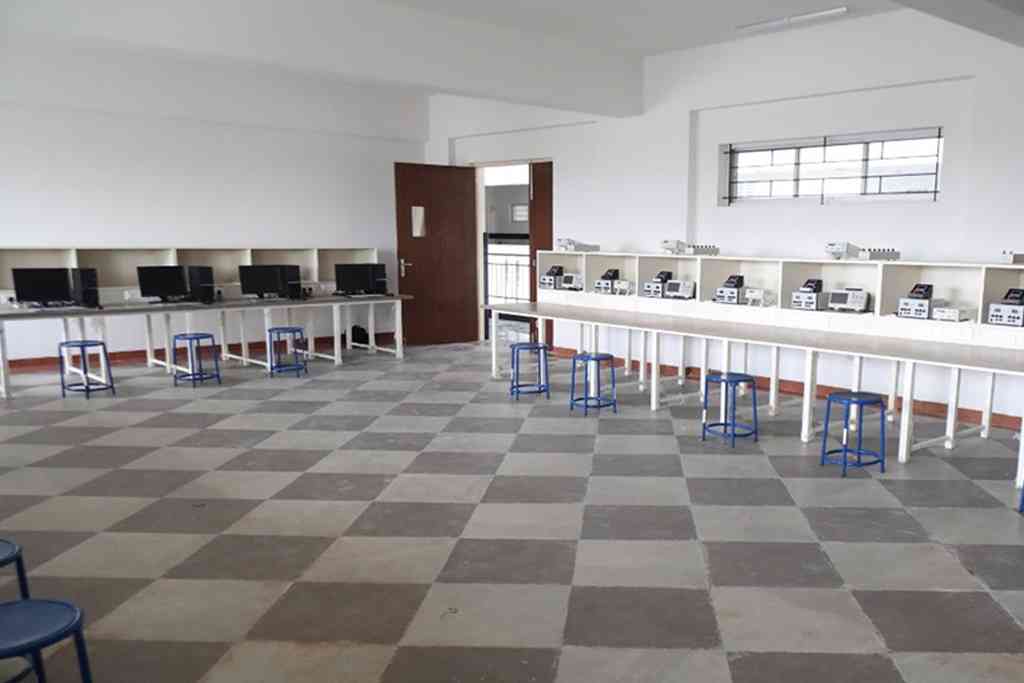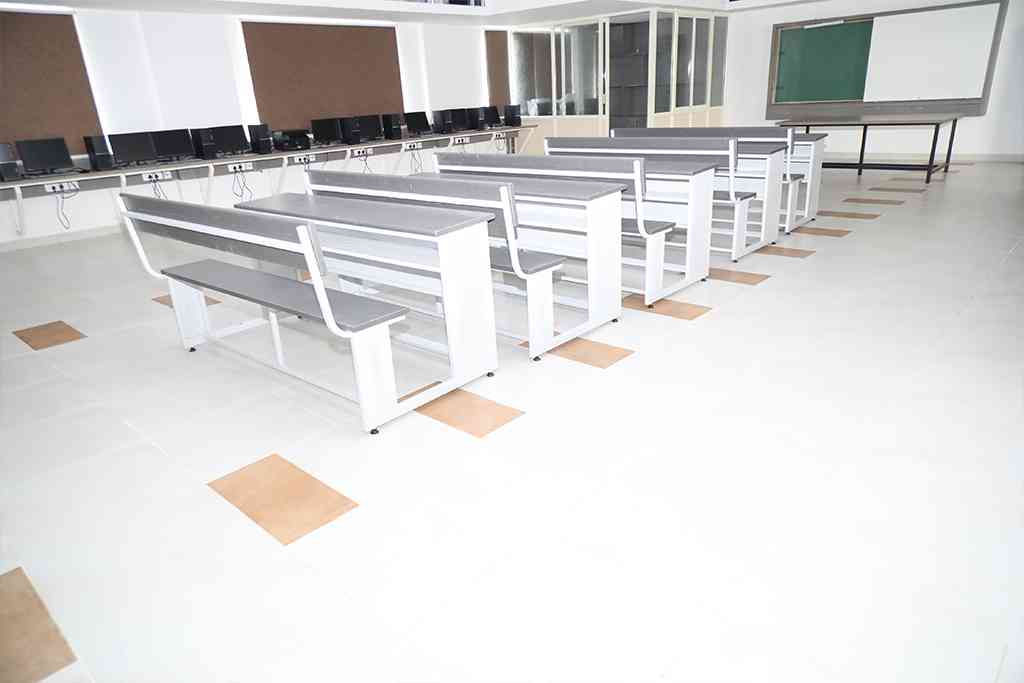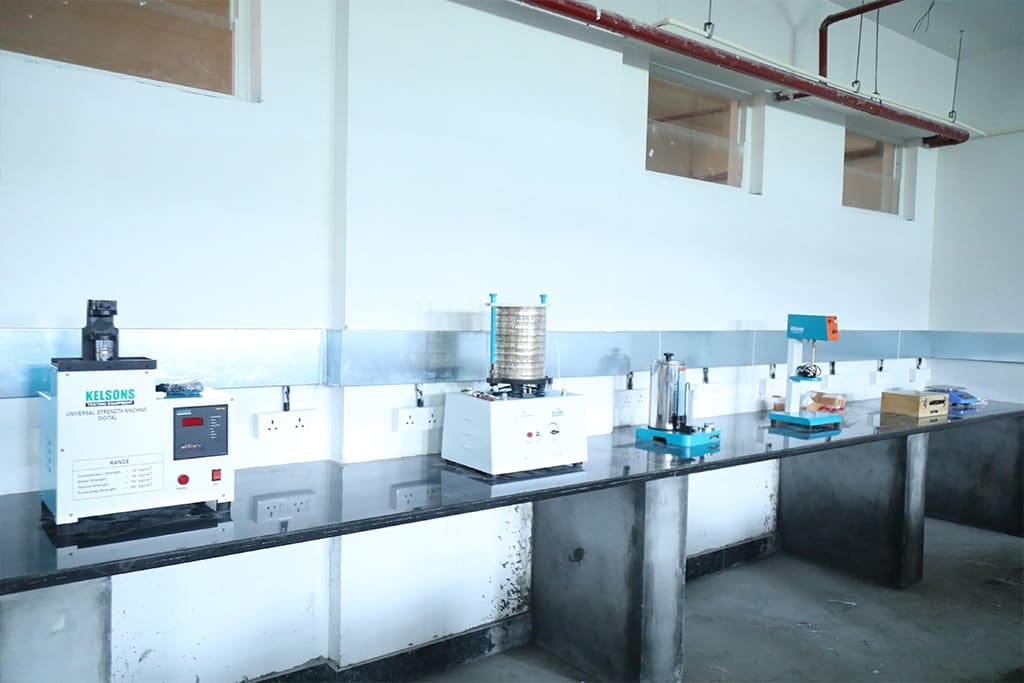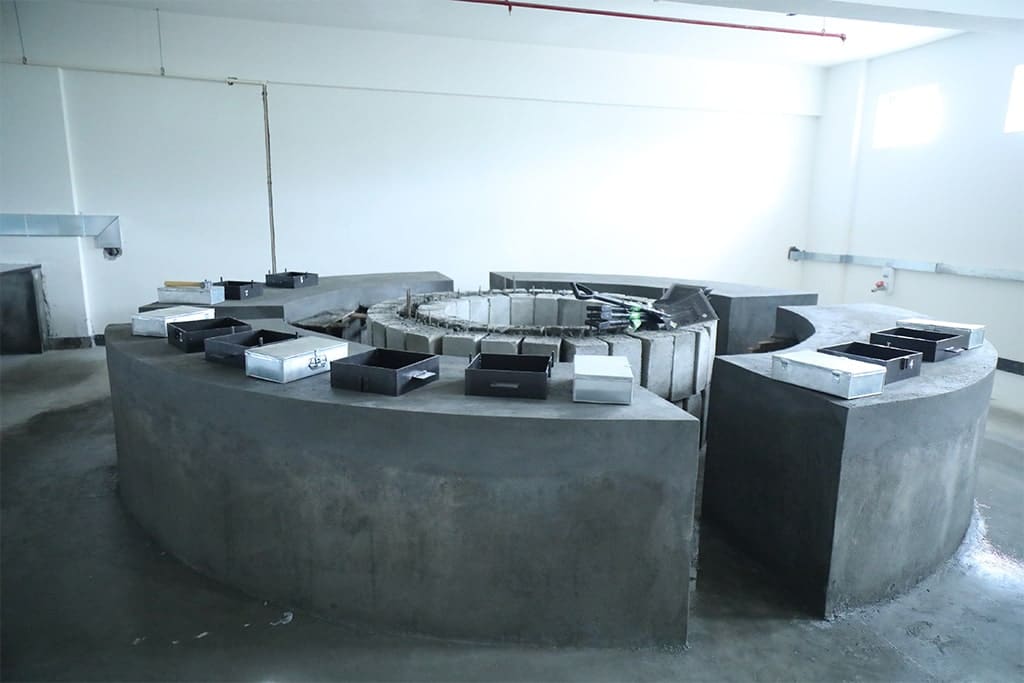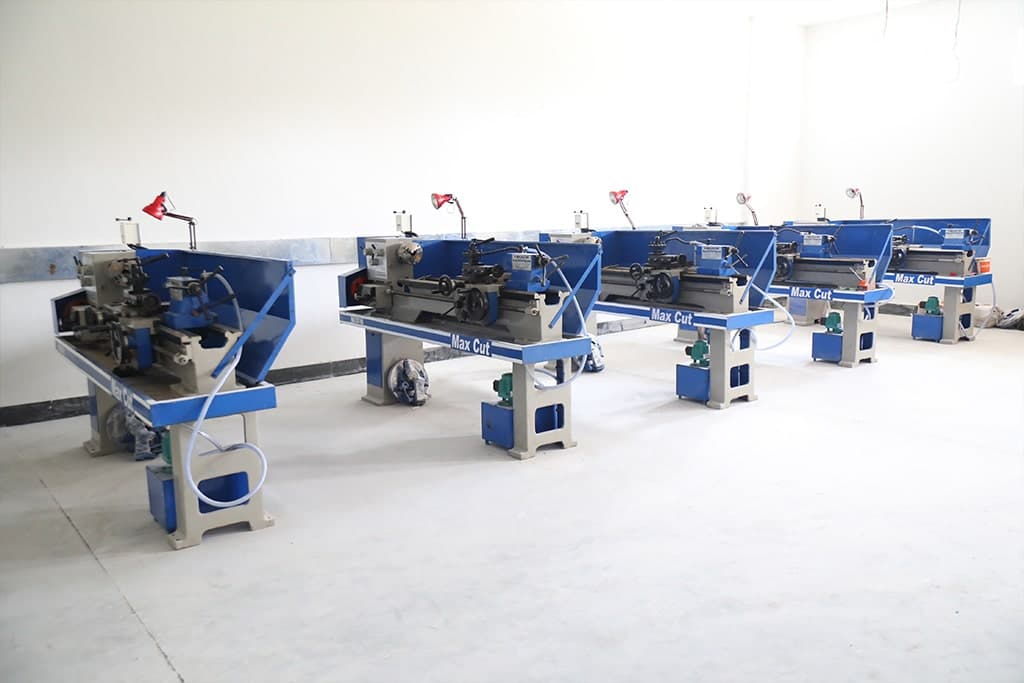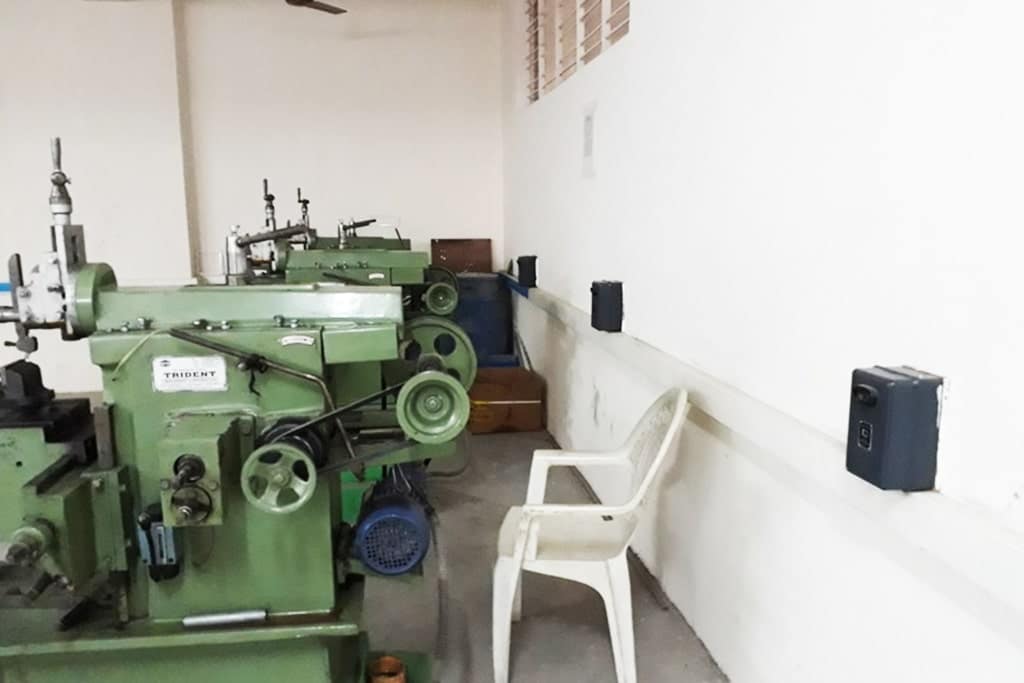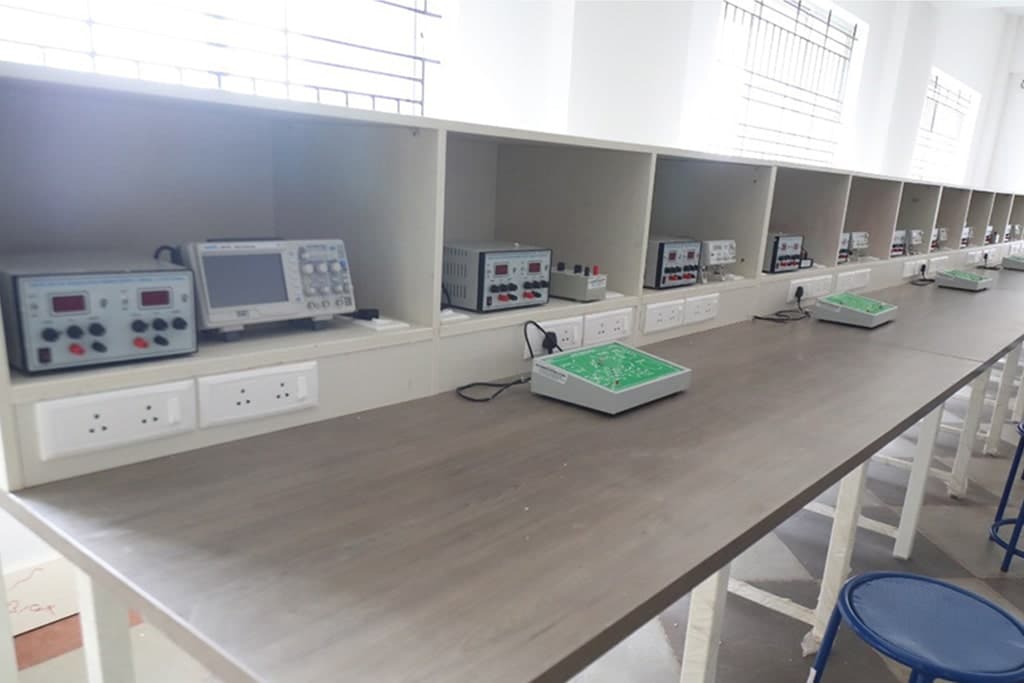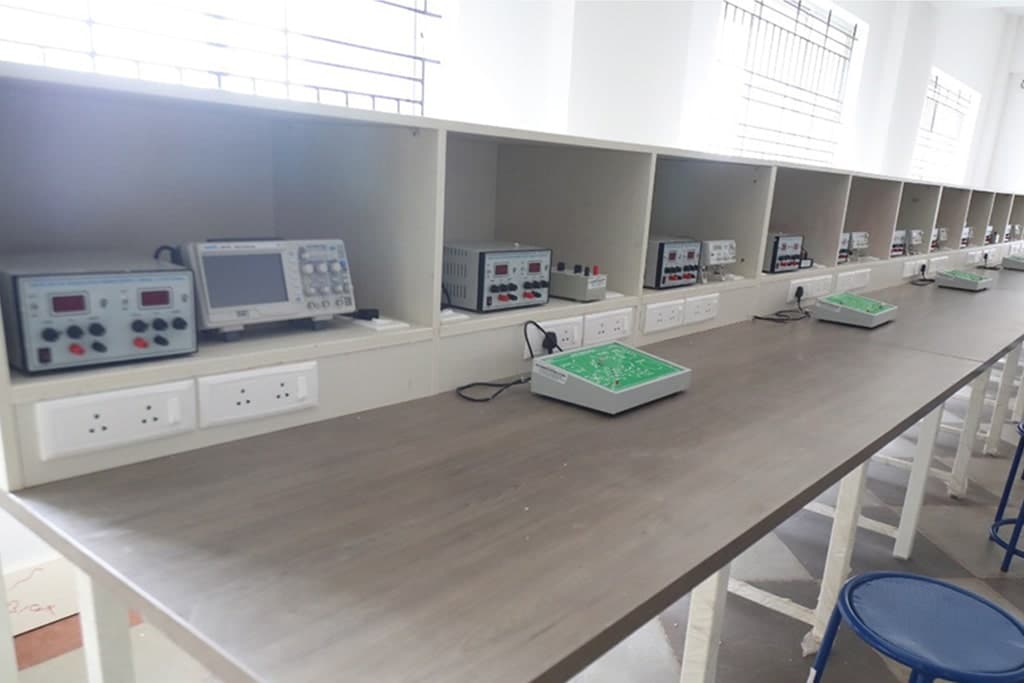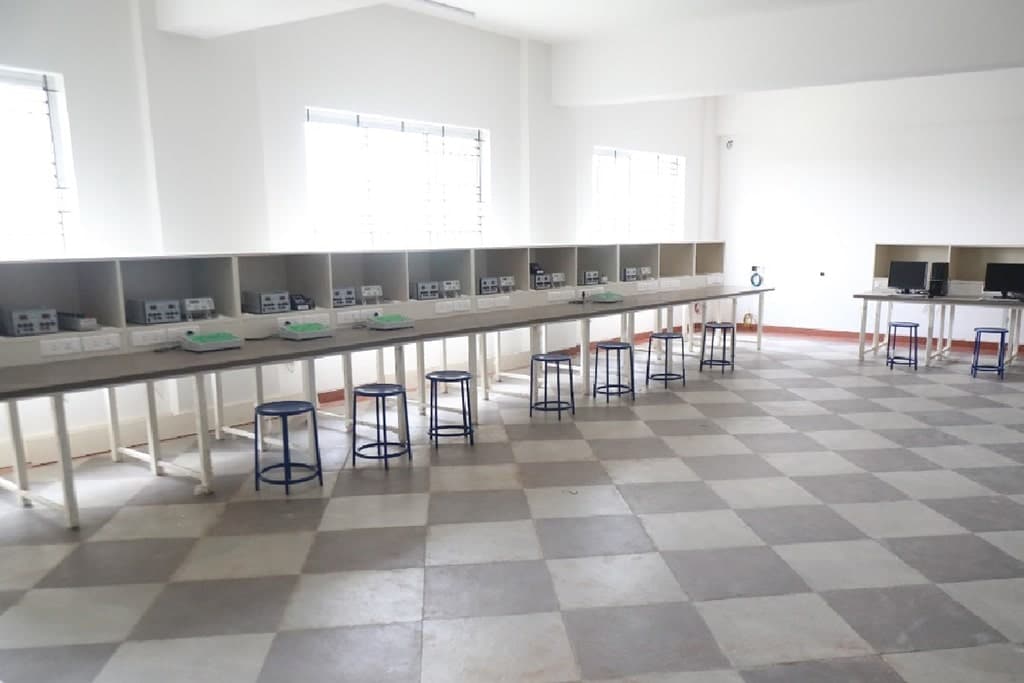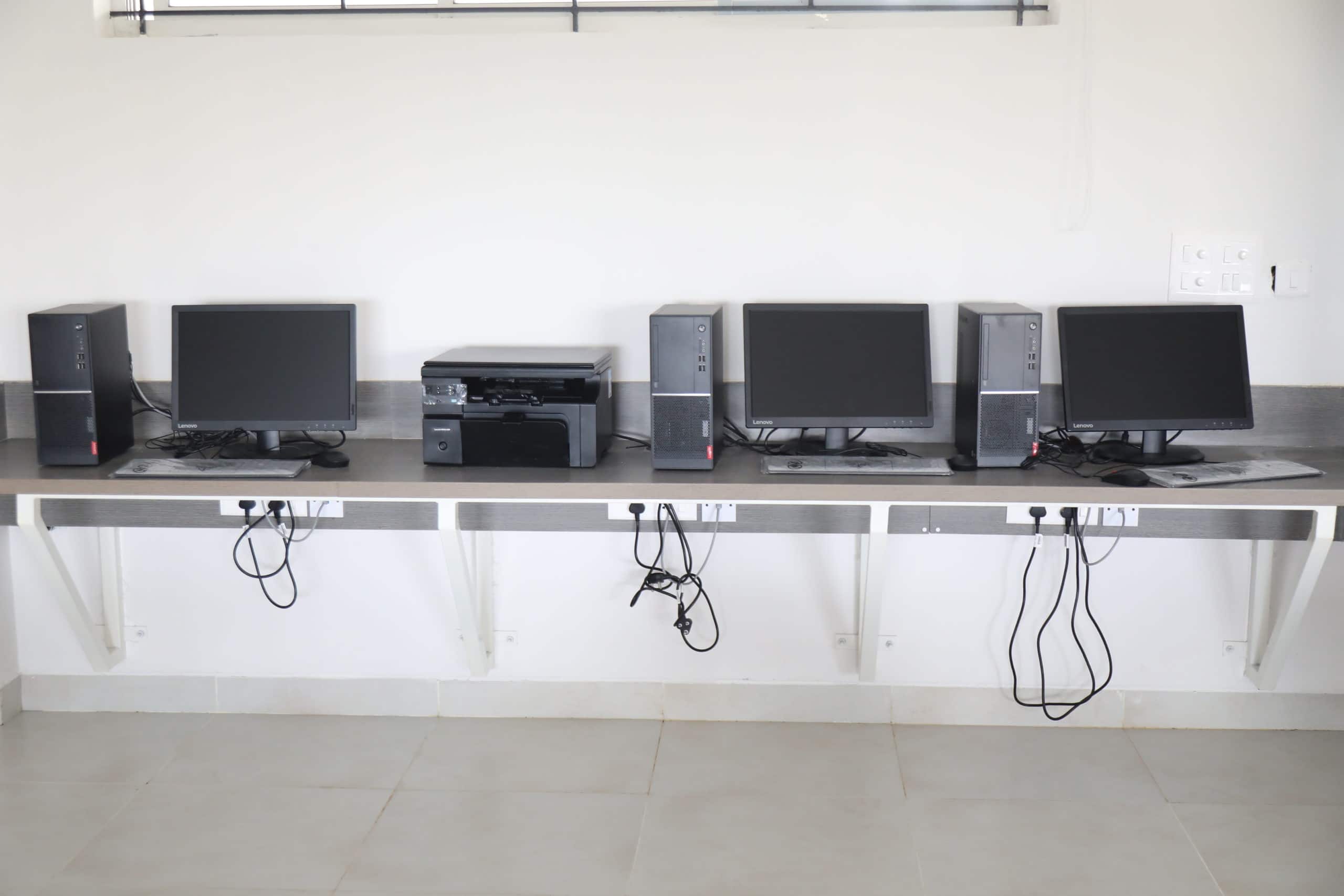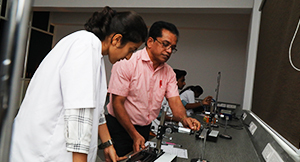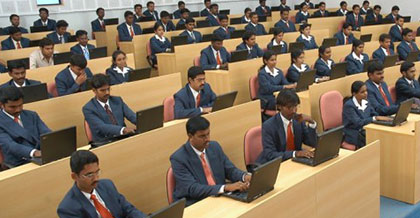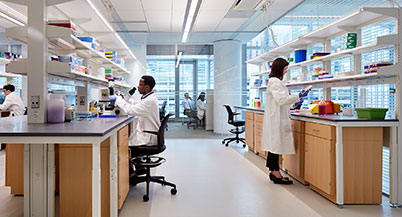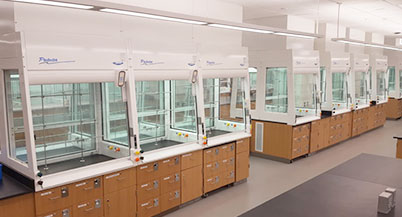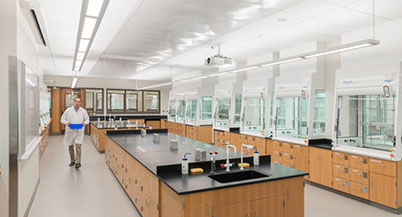- Lab Name / Code: Control Systems Lab (IPCC:BEC403) – IV SEMESTER (ECE)
Control System Toolbox™ provides algorithms and apps for systematically analyzing, designing, and tuning linear control systems. The lab is well equipped with high performance computers. Software packages such as MATLAB2024b with Simulink having Campus-wide license available from Mathworks and Code composer studio are installed in the systems. Students can specify the system as a transfer function, state-space, zero-pole-gain, or frequency-response model. Apps and functions, such as step response plot and Bode plot, let you analyze and visualize system behavior in the time and frequency domains.
Students can tune compensator parameters using interactive techniques such as Bode loop shaping and the root locus method. The toolbox automatically tunes both SISO and MIMO compensators, including PID controllers. Compensators can include multiple tunable blocks spanning several feedback loops. Students can tune gain-scheduled controllers and specify multiple tuning objectives, such as reference tracking, disturbance rejection, and stability margins. Students can validate their design by verifying rise time, overshoot, settling time, gain and phase margins, and other requirements.
Benefits to students:
- Transfer-function, state-space, zero-pole-gain, and frequency-response models of linear systems.
- Step response, Nyquist plot, and other time-domain and frequency-domain tools for analyzing stability and performance.
- Automatic tuning of PID, gain-scheduled, and arbitrary SISO and MIMO control systems.
- Root locus, Bode diagrams, LQR, LQG, and other classical and state-space design techniques.
- Model representation conversion, continuous-time model discretization, and low-order approximation of high-order systems.
Digital Signal Processing Laboratory (IPCC 21EC42) – IV SEMESTER (ECE)
Digital Signal Processing Laboratory is used by UG Students for the theoretical contents taught in the lectures are put into practice and deepened through practical trainings. Digital Signal processing techniques improve signal quality or extract important information by removing unwanted part of the signal or processing the signal to understand the signal properties. Digital Signal Processing accounts for a substantial proportion of the world market for electronic devices, and therefore, the leading electronics manufacturers are using DSP technology.
The lab is well equipped with 20 number of high performance computers. Software packages such as MATLAB with Simulink having Campus-wide license available from Mathworks and Code composer studio are installed in the systems. The lab has Texas Instruments TMS320C6748 DSP Starter Kit with XDS100 Emulator DSP kits along with Digital Storage Oscilloscope for carrying out various advanced experiments.
Lab Name / Code: Electronic Analog and Digital Electronics Lab (21ECL35) – III SEMESTER (ECE)
Analog and Digital Electronics Lab is designed for III semester UG students. The focus of the Analog Circuits Laboratory at the ECE department is to expose the students of III semester UG to electronic devices such as BJT, FET, and OPAMPS. This laboratory has DSO, Signal Generator, DC Power Supply, and Digital Meters as major equipment. Digital Electronics Lab consists of major equipment like Digital IC Trainer Kit, Digital Signal Generator (DSO), Signal Generator, testing kits, and discrete components to test and verify logic gates and implement experiments like comparators, flip-flops, shift registers, adders, etc. Open-source simulation tools are used analyse serial adders and binary multipliers.
Benefits to students:
- Students will be designing analog circuits using BJT, FET, and OPAMPS to evaluate their performance characteristics. They will also simulate and analyze analog circuits for different electronic applications.
- Students will be designing digital circuits like adders, flip flop, registers using different ICs.
- Lab Name / Code: Communication Lab (PCCL:BECL404)- IV SEMESTER (ECE)
The communication Lab provides the necessary hardware and software resources to the undergraduate students of Electronics and Communication Engineering for enhancing their skills in communication field. In this laboratory, UG students are trained for constructing the circuits for analog and digital modulations. The concepts of all type of modulation and demodulation, Understand the sampling theory and design circuits which enable sampling and reconstruction of analog signals, Design electronic circuits to perform pulse amplitude modulation, pulse position modulation and pulse width modulation and recent communication techniques are demonstrated using available hardware and software tools. Theory in the classroom is translated directly into practice. The lab is well equipped with AM/FM Modulation & Demodulation Trainer Kits, FSK/PSK Mod & Demodulation Trainer Kits, TDM Mod & Demodulation Trainer Kits, Sampling & Reconstruction Trainer Kits, and Digital Storage Oscilloscope to carryout advanced experiments.
Benefits to students:
- This course familiarizes the students with basic analog communication systems with experiments so that the students appreciate the knowledge gained from the theory course by giving them deep knowledge about the principles and techniques of modern communication systems. It includes knowledge in various methods of analog communication including amplitude modulation (AM) and frequency modulation (FM) with detailed analysis on signal flow and it’s nature.
- This lab also focuses on understanding the fundamental concepts of signal flow in a digital communication system. Detailed analysis of TDM, Pulse modulations, digital modulation techniques, sampling and reconstructions are done.
- Lab Name / Code: Microcontroller Laboratory (AEC:BEC456A ) – IV SEMESTER (ECE)
Lab Name / Code: Computer Organization and ARM Microcontroller Laboratory (IPCC 21EC52 ) – IV SEMESTER (ECE)
Microcontroller Laboratory in the ECE department is designed to cater to the curriculum of IV semester UG students. This Lab consists of Keil Microvision software. The laboratory also consists of Programmable Evaluation Board, Dual DAC Interface, Elevator Interface, Multiplexed Display and Key Pad, Stepper Motor and DC Motor Interface as major equipment. The students will be executing the assembly language program in 8051 in Keil Microvision4 Software . Students will also interface various input and output devices for different applications like serial LCD Display, Stepper Motor Control, Serial Data Transfer, etc.
Benefits to students
- Real-time Data Processing: Microcontrollers have the ability to process data in real-time, enabling instantaneous analysis and decision-making.
- User-friendly Interfaces: Instruments based on microcontrollers frequently have user-friendly interfaces including graphical displays, touchscreen controls, and straightforward software.
- Automation and Efficiency: Laboratory tools automate a number of procedures, cutting down on the need for human labour and boosting productivity. Sample preparation, data collection, and analysis are only some of the time and energy savers made possible by these machines.
Lab Name / Code: VLSI Laboratory (PCC:21ECL66 ) – VI SEMESTER (ECE)
Cadence Software Suite: The VLSI lab at RVITM is furnished with the Cadence software suite, a leading platform in the semiconductor industry for electronic design automation (EDA). This suite includes tools such as Cadence Virtuoso for schematic capture and layout, Spectre for circuit simulation, and Encounter for physical implementation.
Workstations: The lab is equipped with high-performance workstations loaded with powerful processors and ample RAM to handle resource-intensive design tasks efficiently.
Benefits to Students:
- Hands-on Learning: Students have the opportunity to gain practical experience by working on real-world VLSI design projects using industry-standard tools.
- Industry Relevance: Exposure to tools like Cadence prepares students to meet the requirements of the semiconductor industry and enhances their employability.
- Research and Innovation: Access to advanced VLSI design tools encourages students and faculty to engage in research and innovation in areas such as low-power design,analog/mixed-signal design, and emerging technologies like machine learning in hardware.
- Lab Name / Code: Digital System Design Using Verilog(IPCC BEC302) – IV SEMESTER (ECE)
Verilog is a Hardware Description Language; a textual format for describing electronic circuits and systems. Applied to electronic design, Verilog is intended to be used for verification through simulation, for timing analysis, for test analysis (testability analysis and fault grading) and for logic synthesis. In this lab simple circuits will be designed by programming the field-programmable gate array (FPGA). The lab is well equipped with 20 number of high performance computers, Spartan FPGA Kits, USB Dongle and Digital Storage Oscilloscope to carryout advanced experiments.
Benefits to students:
- students will understand the design of digital circuits in verilog programming.
- Programming can be done using Xilinx ISE . Download the programs on a FPGA/CPLD boards such as Spartan 6 and performance testing may be done using 32 channel pattern generator and logic analyzer apart from verification by simulation with tools such as Xilinx.
Lab Name / Code: Microwave Theory and Antennas Laboratory (IPCC 21EC62 ) – VI SEMESTER (ECE)
The Microwave Theory and Antennas Lab for undergraduate VI semester/3rd Year gives knowledge about antennas, RF, and microwave subsystems. Students are taught to characterize and verify microwave components using klystron workbench. They are also trained to measure and analyze various antennas. This laboratory is dedicated to providing cutting- edge facilities that attract the future RF engineers to develop next generation products. It describes the use and advantages of microwave transmission. This Lab is well equipped with Microwave Training Kit (Klystron Based), E plane Tee, H plane Tee, Magic Tee, Directional Couplers, Patch Antenna, Antenna Tripod Stand, Digital Storage Oscilloscopes, Microwave Signal Source X‑band, VSWR Meter (60db range).
Benefits to students:
- Students will analyze various parameters related to transmission lines. Identify microwave devices for several applications.
- Students will analyze various antenna parameters and their significance in building the RF system. Identify various antenna configurations for suitable applications.
- Students will analyze frequency-wavelength measurement, power and attenuation measurement in a microwave Test bench, impedance measurement using Smith’s chart, gain and radiation pattern measurement of the antenna, and characteristics of E-plane, H-plane & Magic Tee are conducted through microwave test benches.

